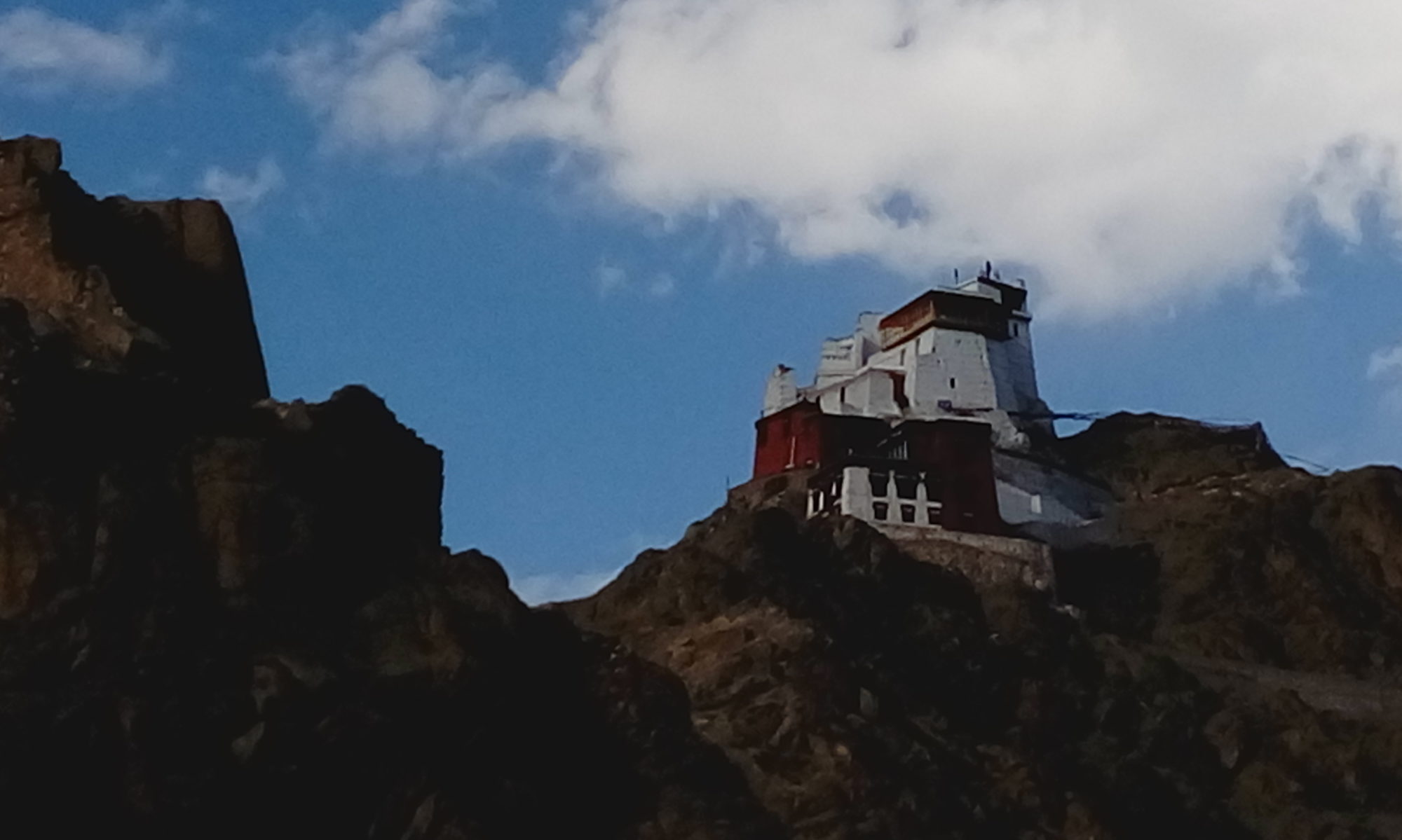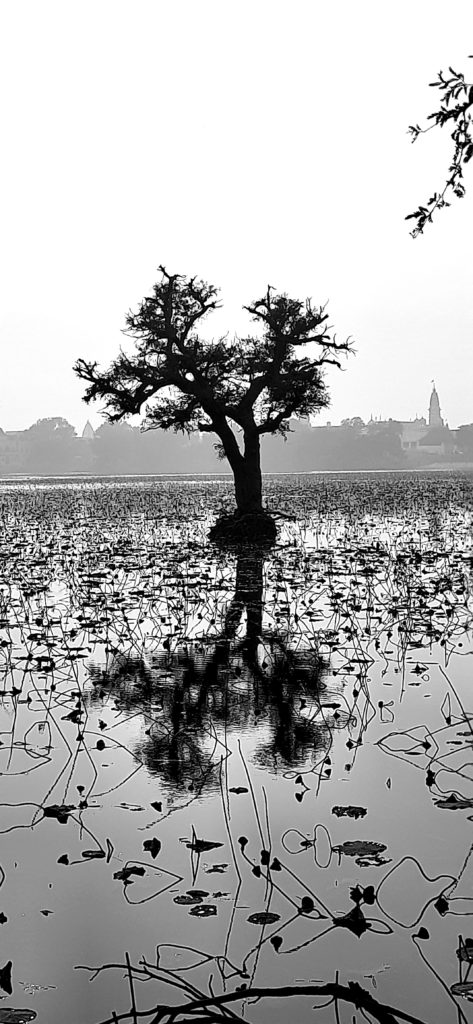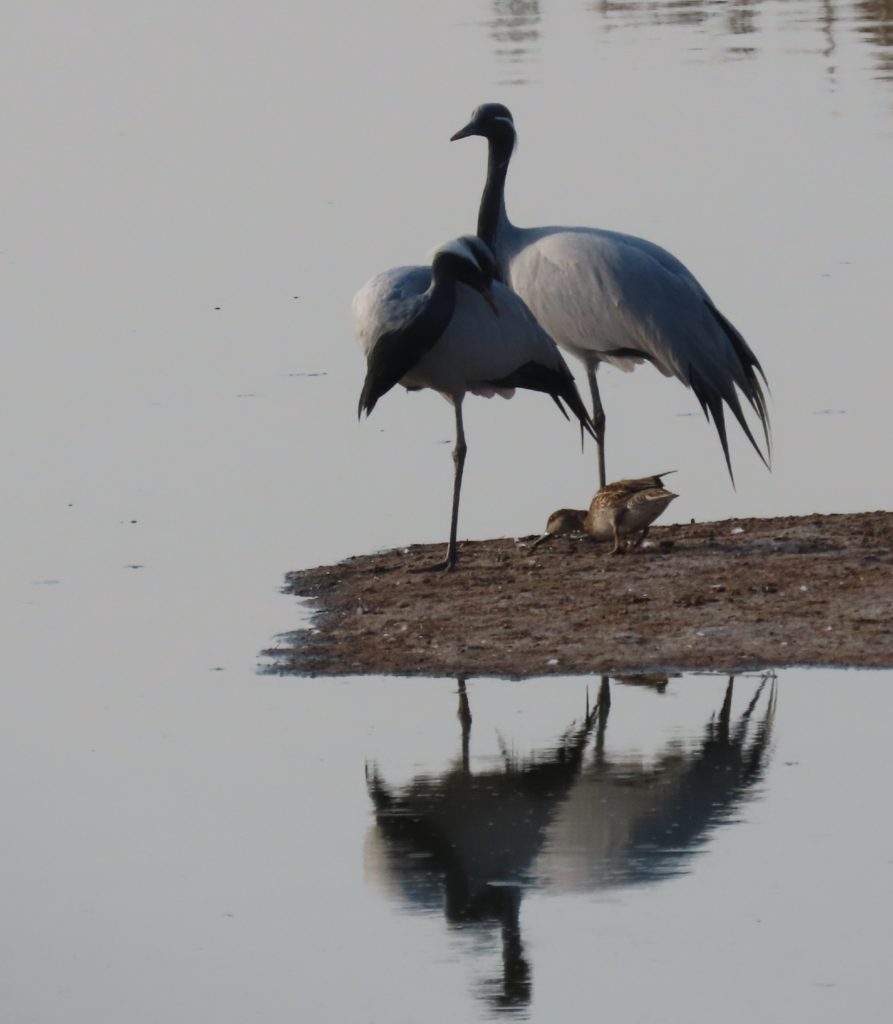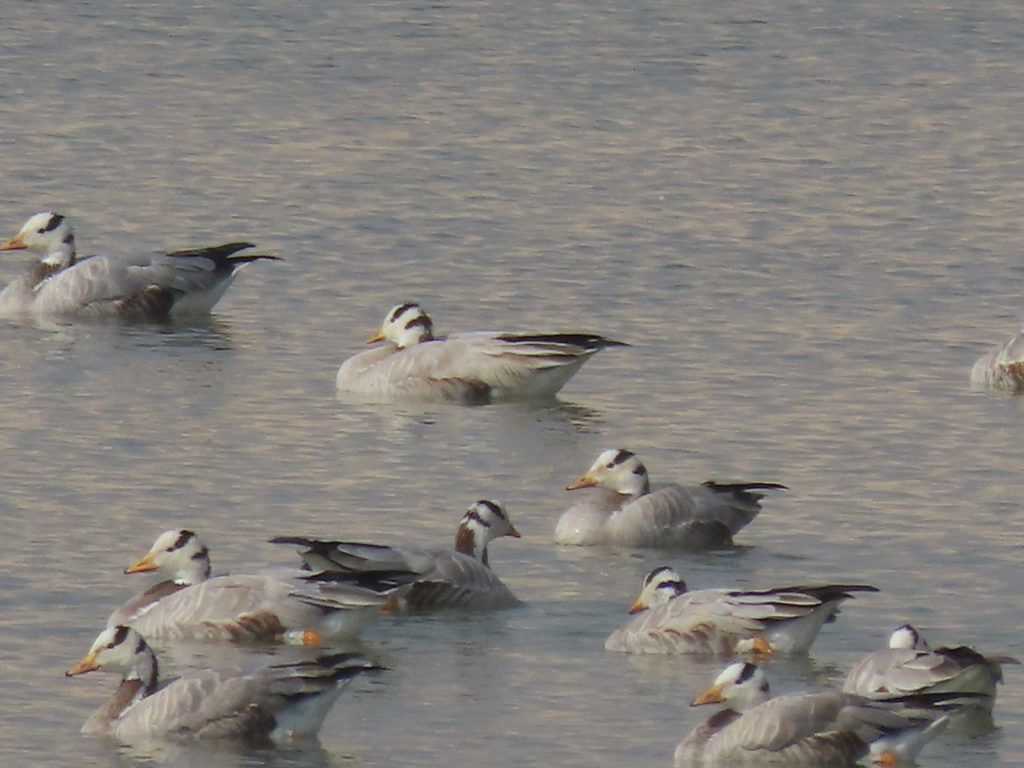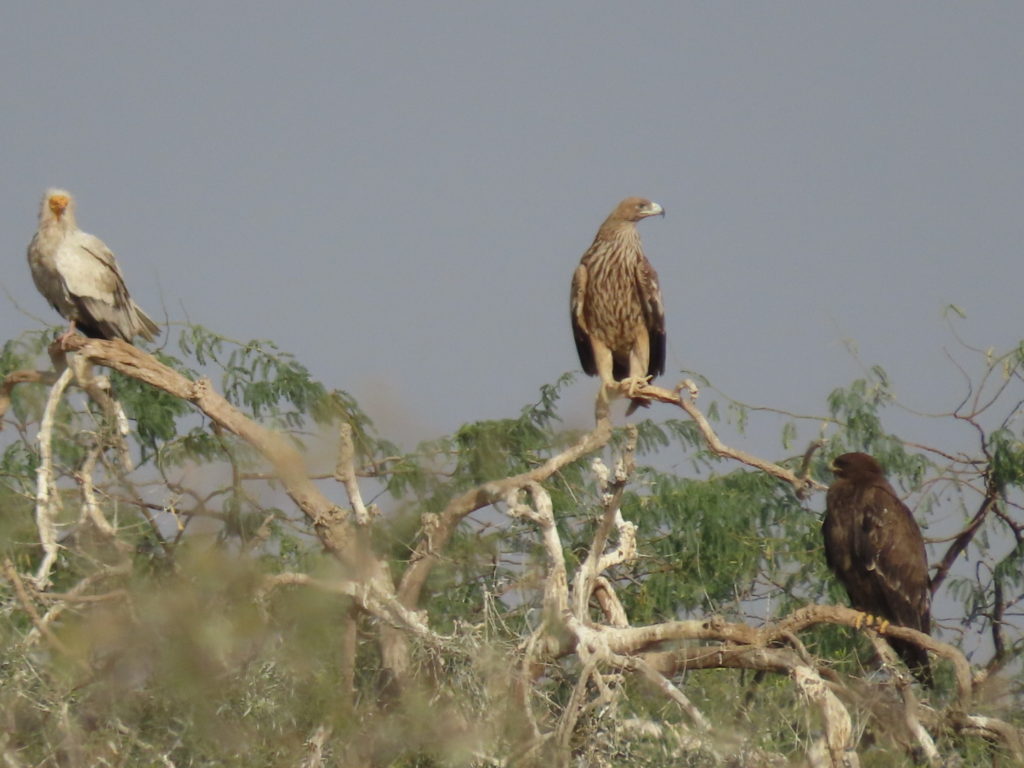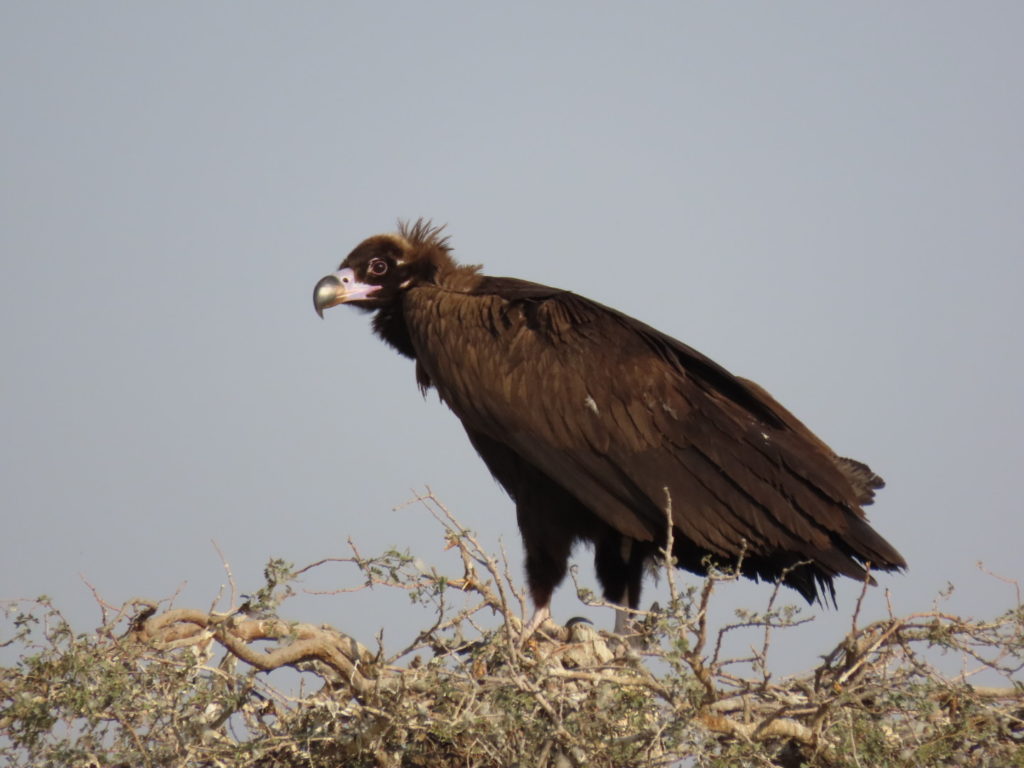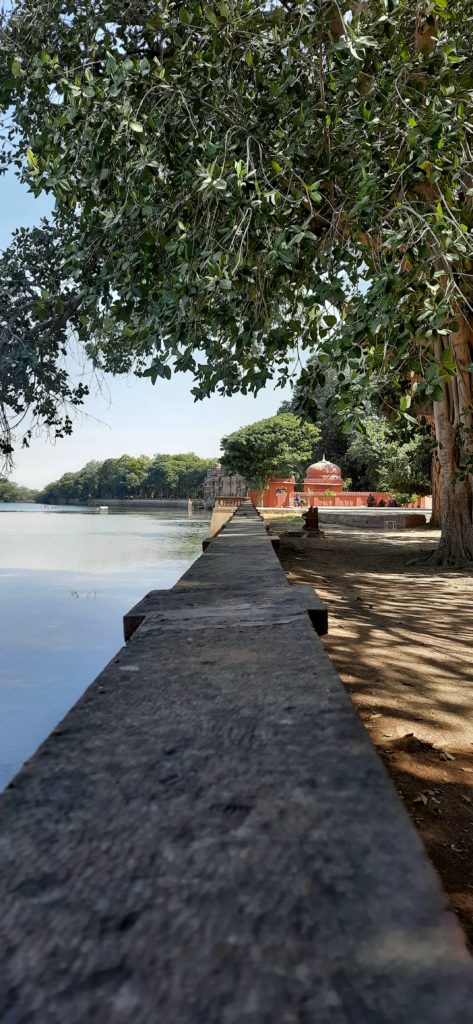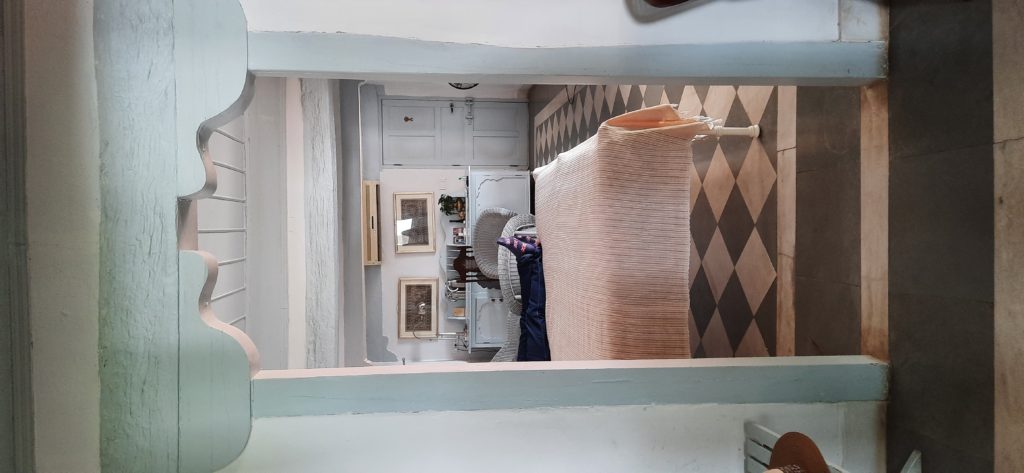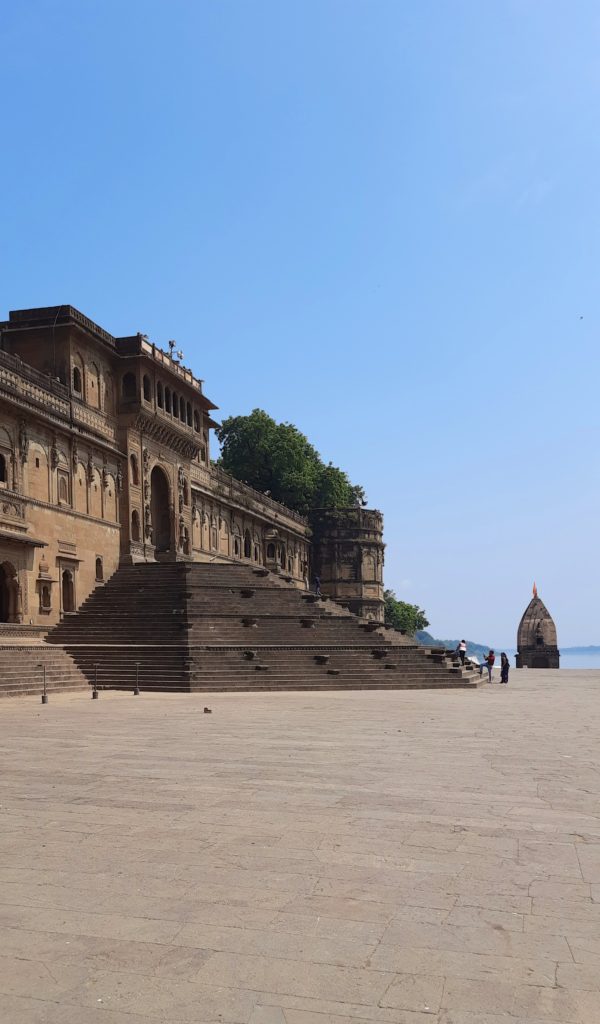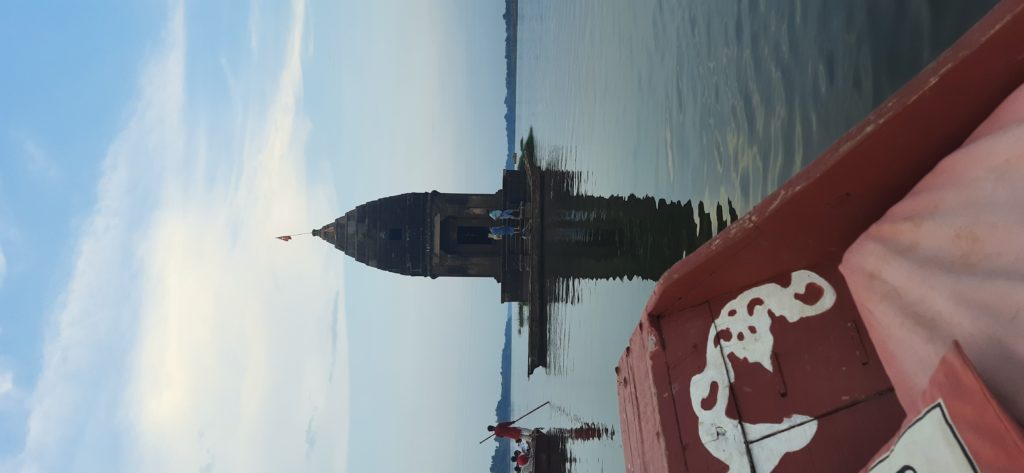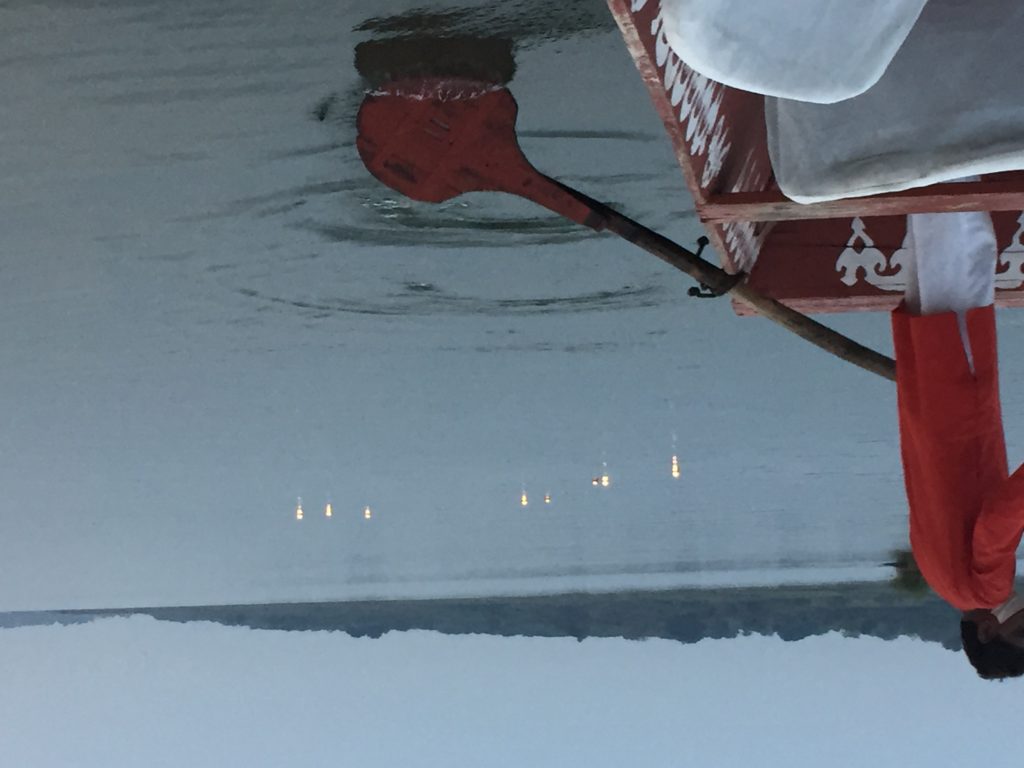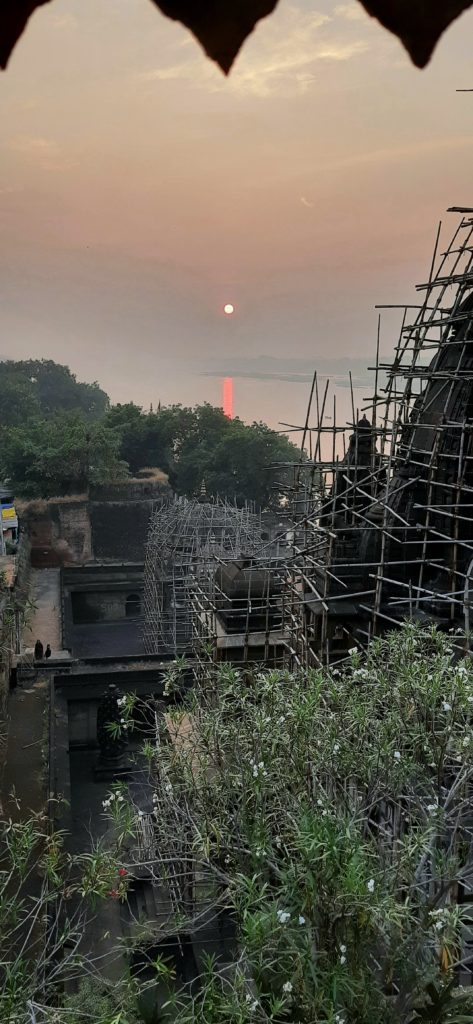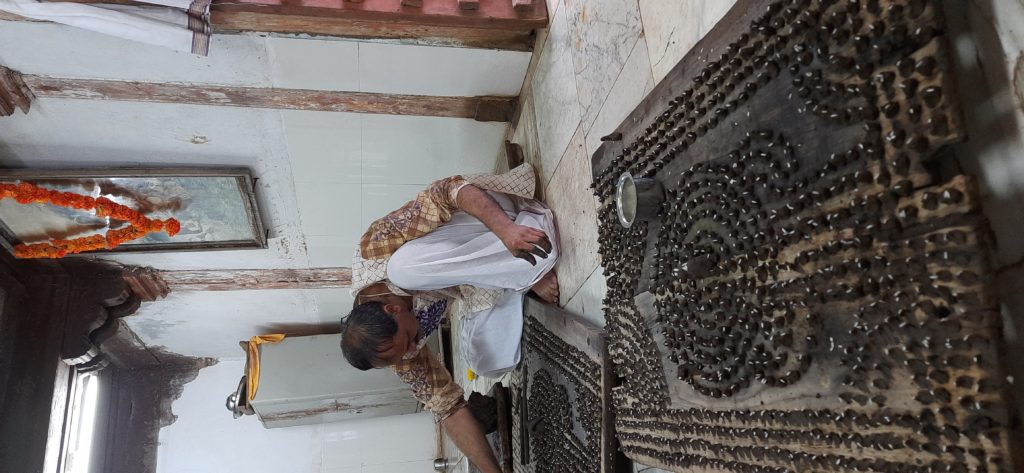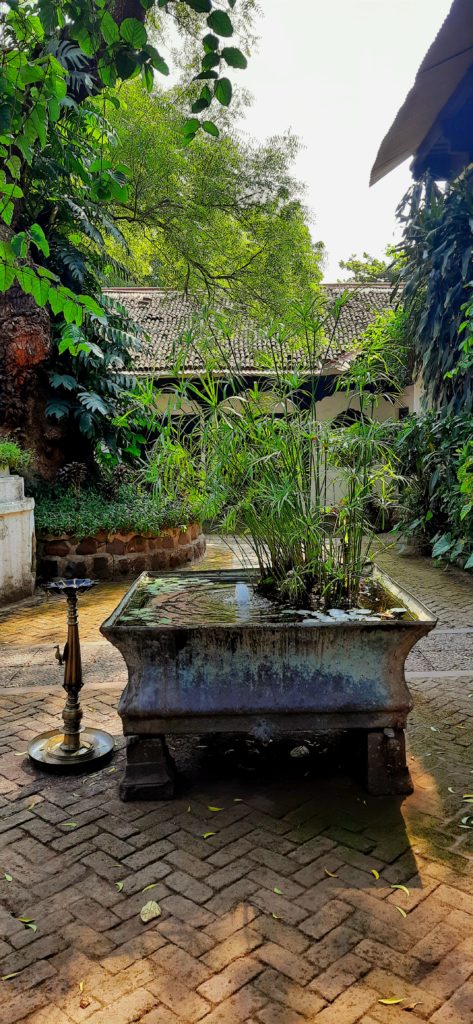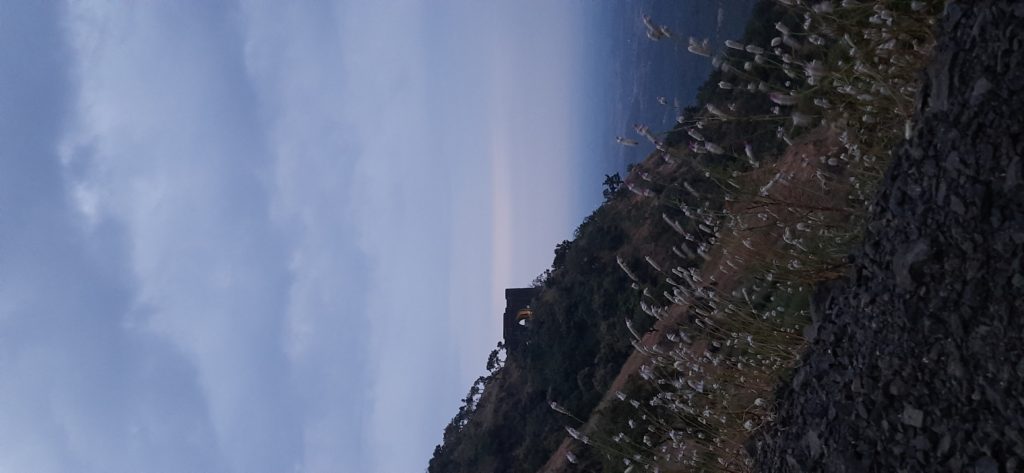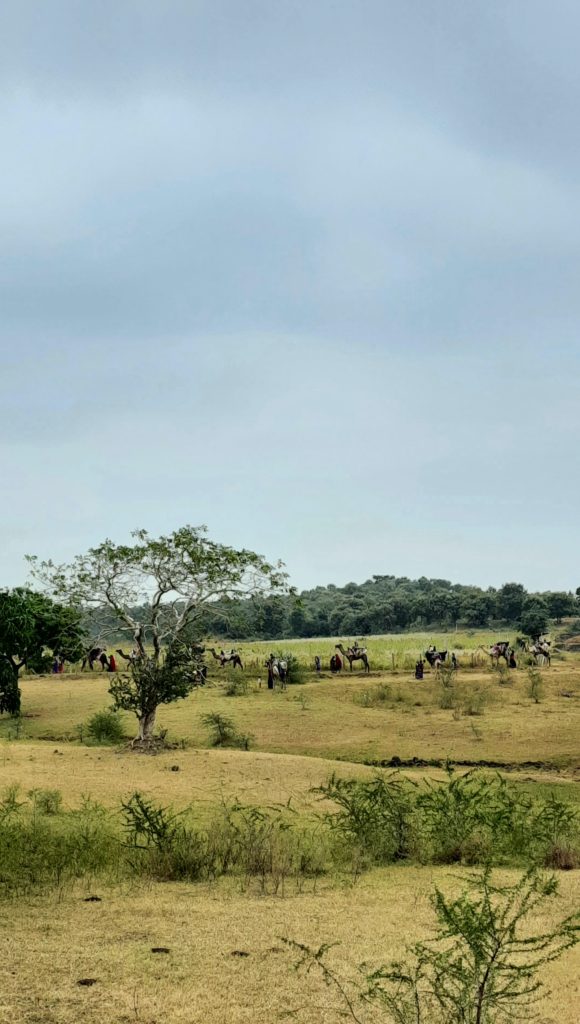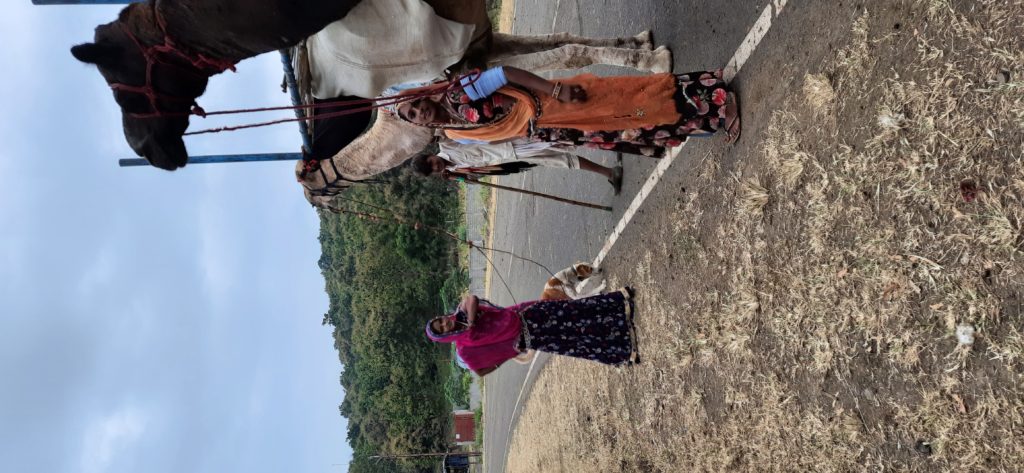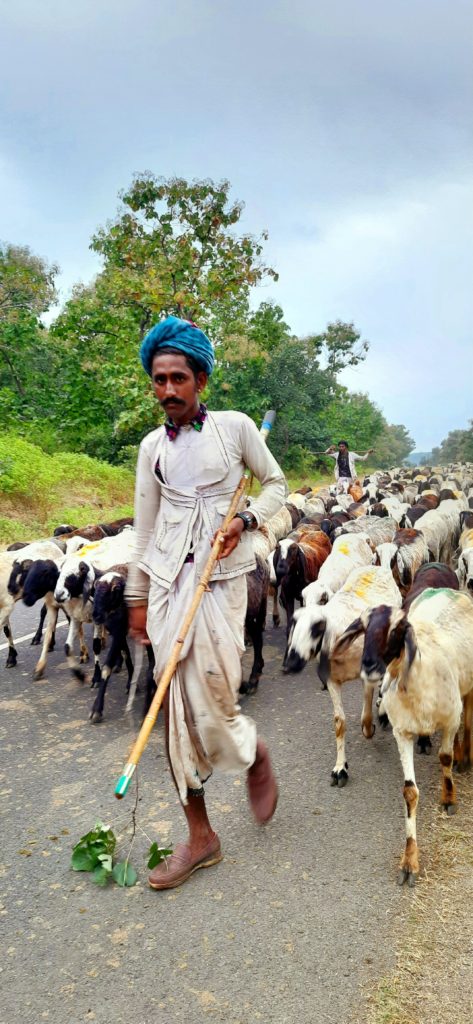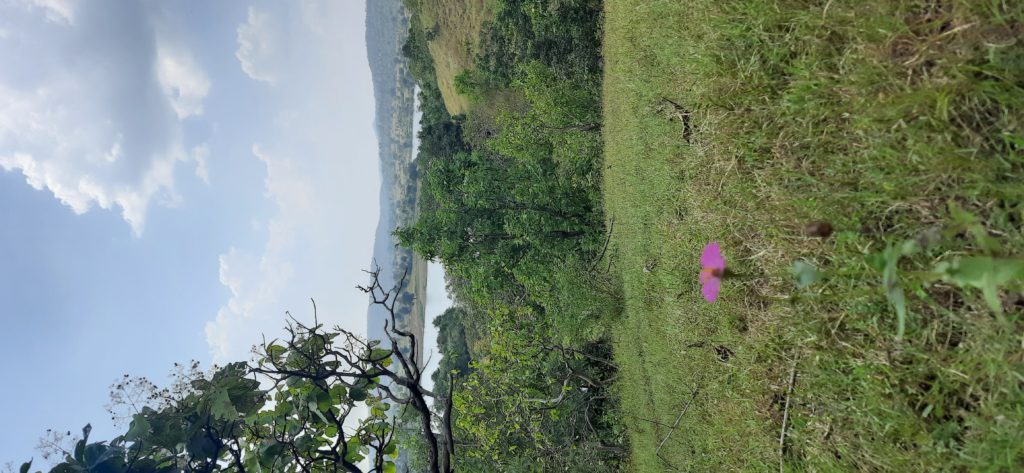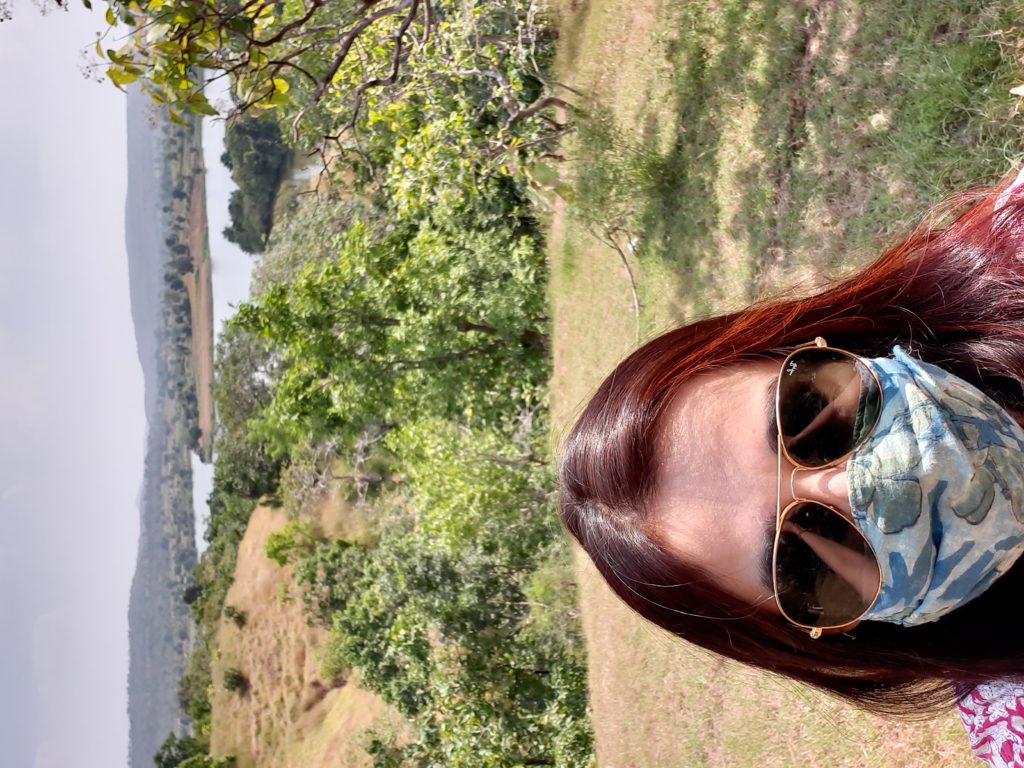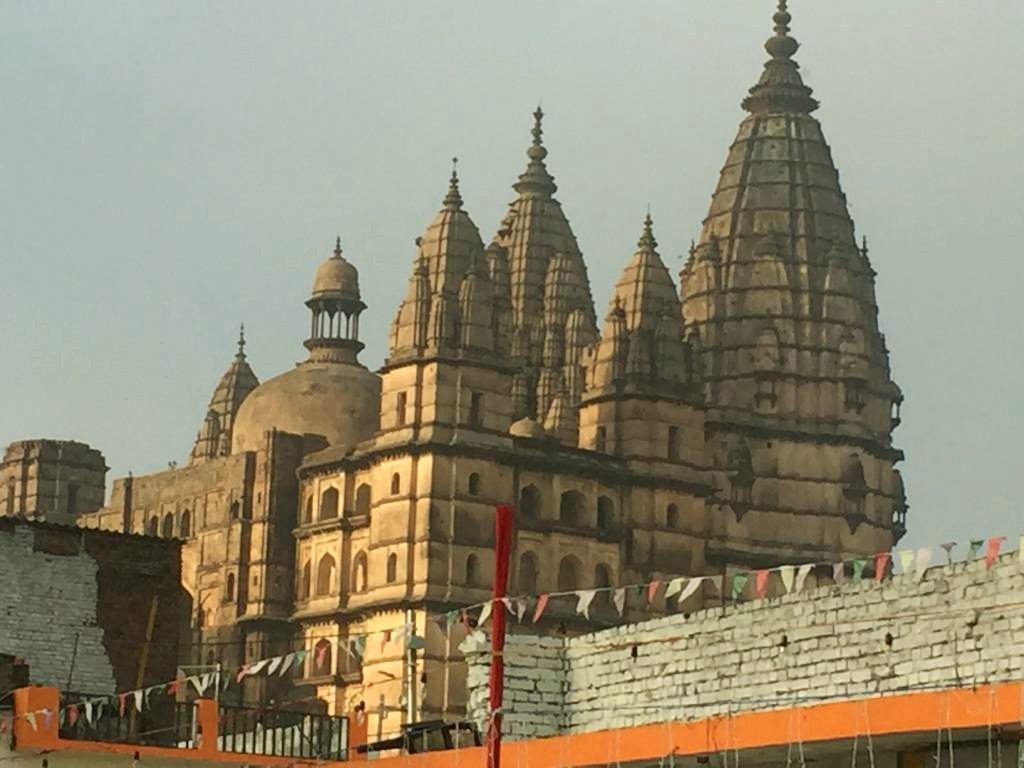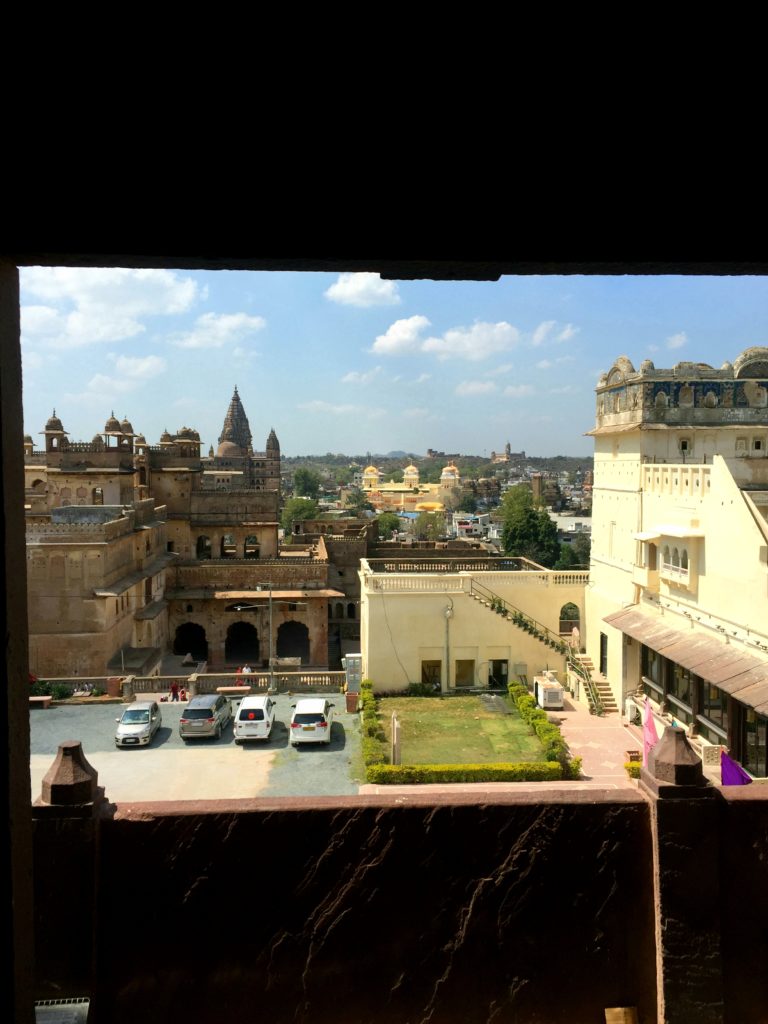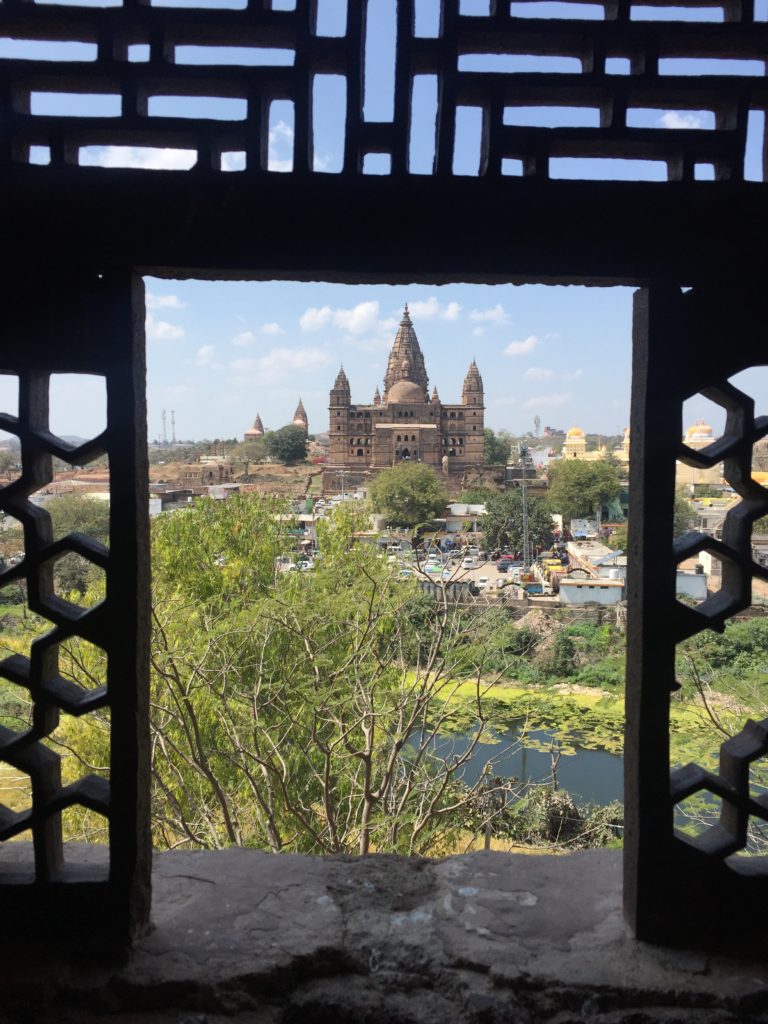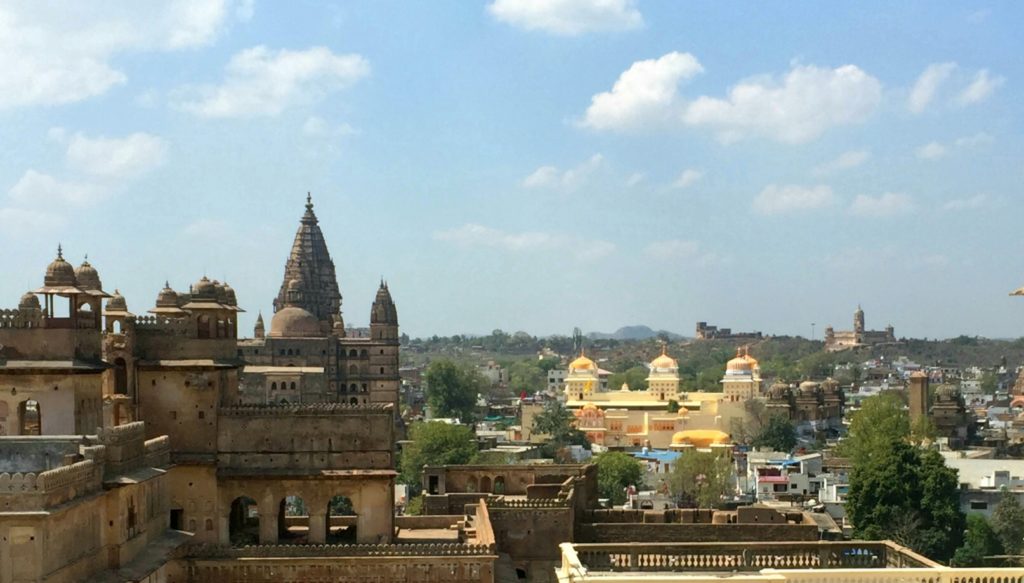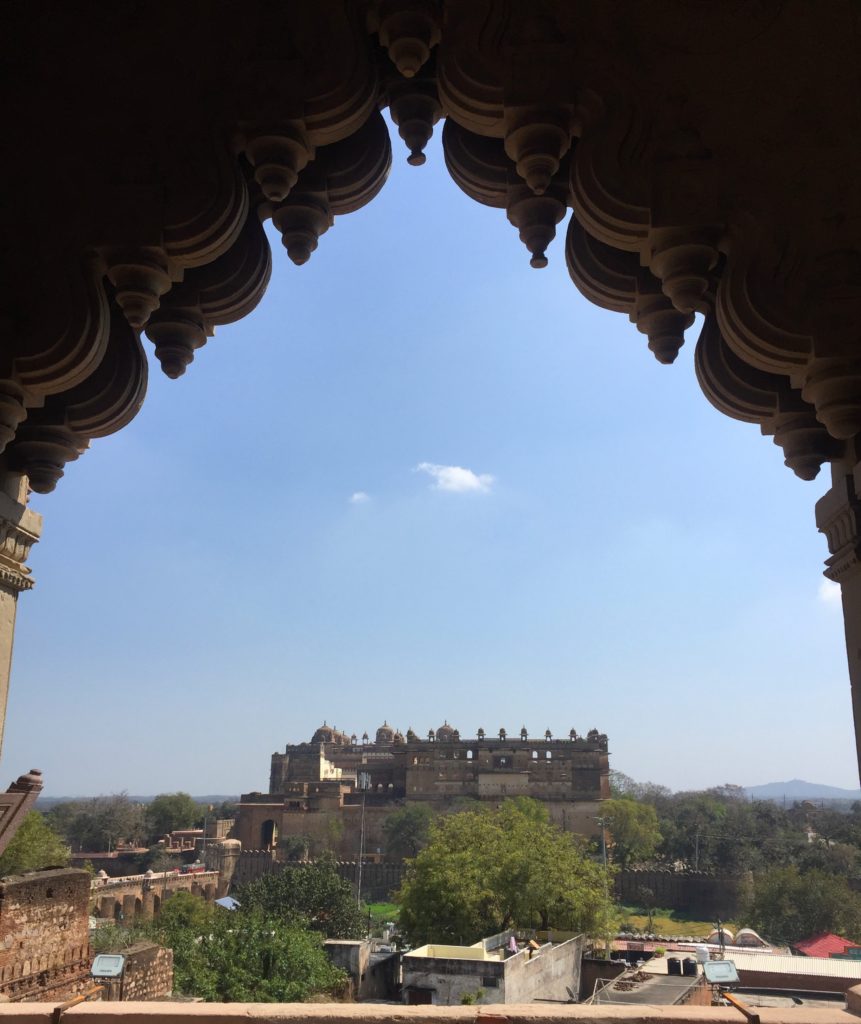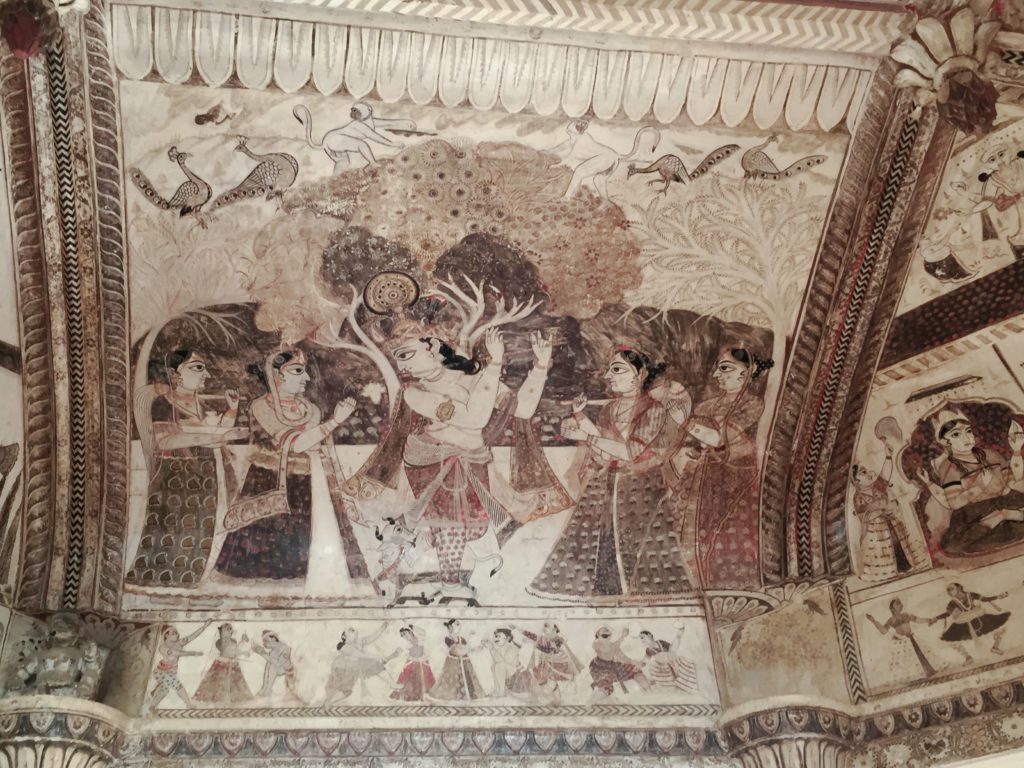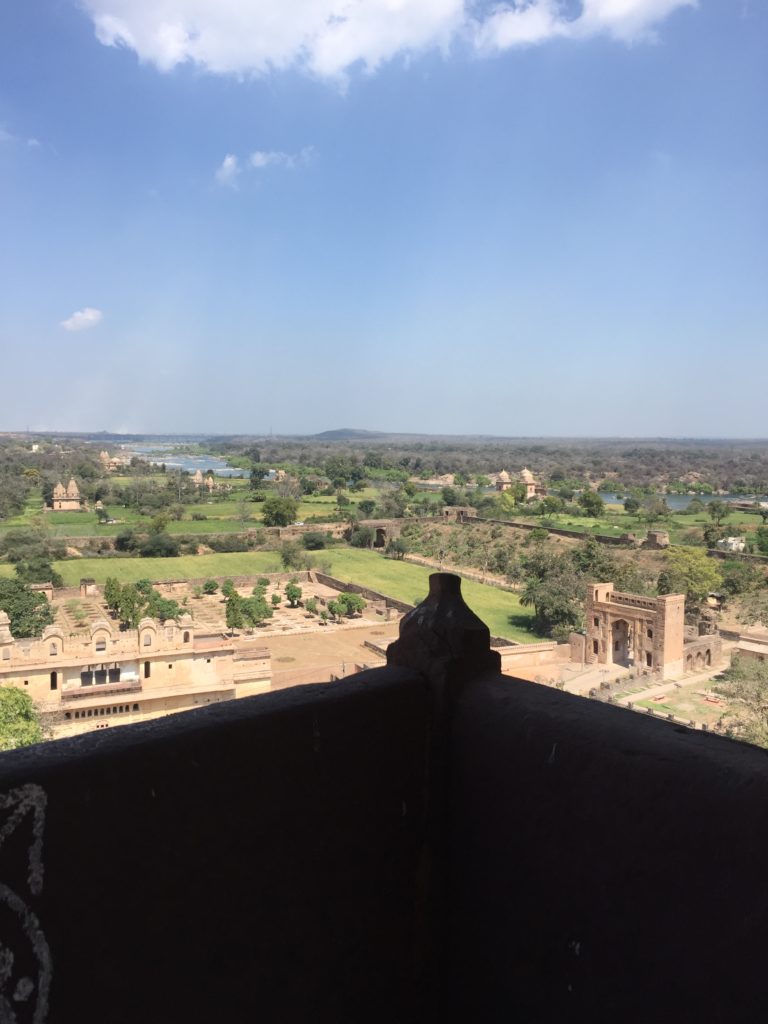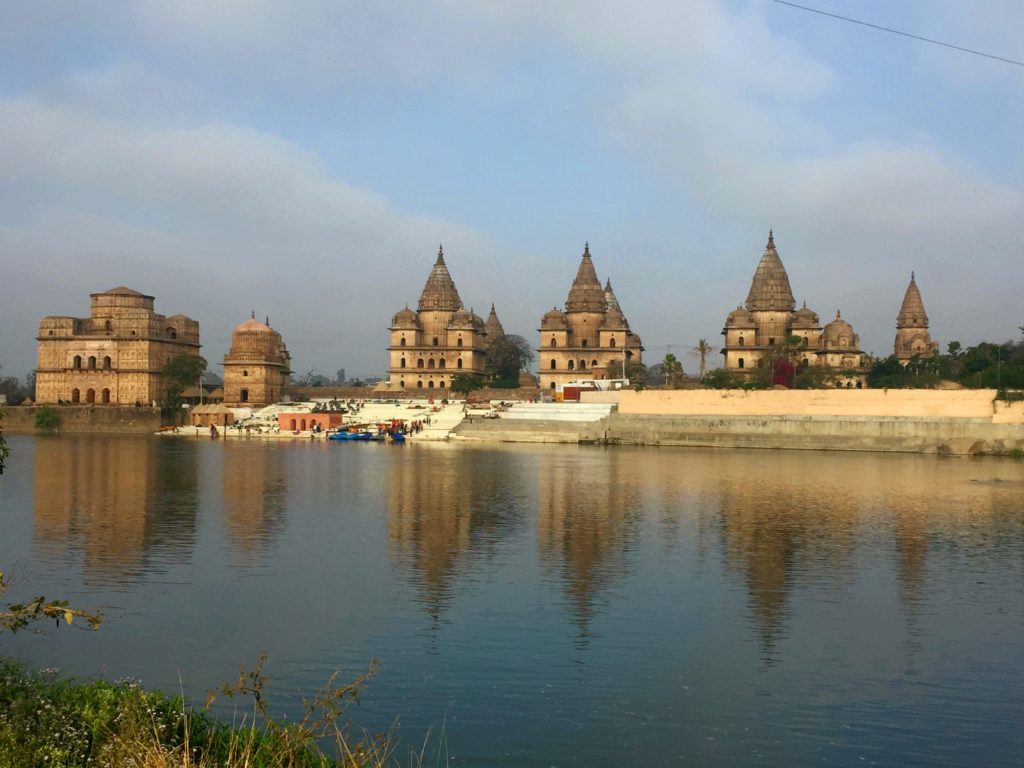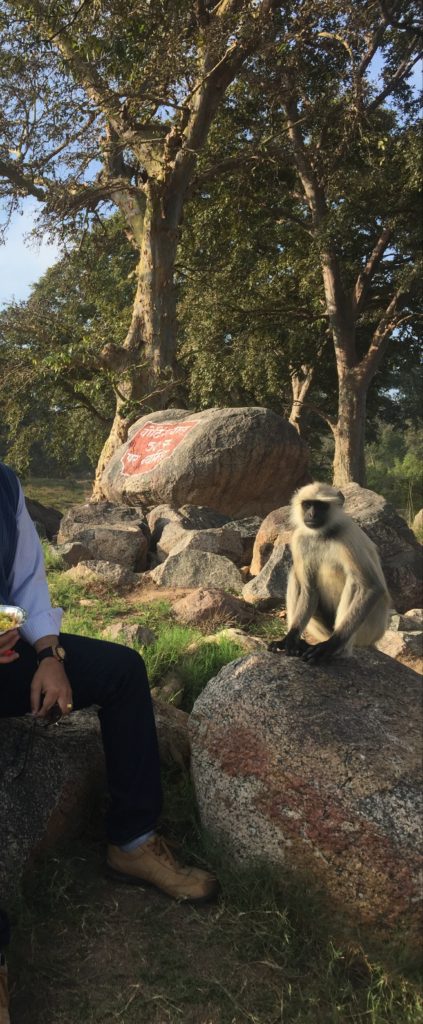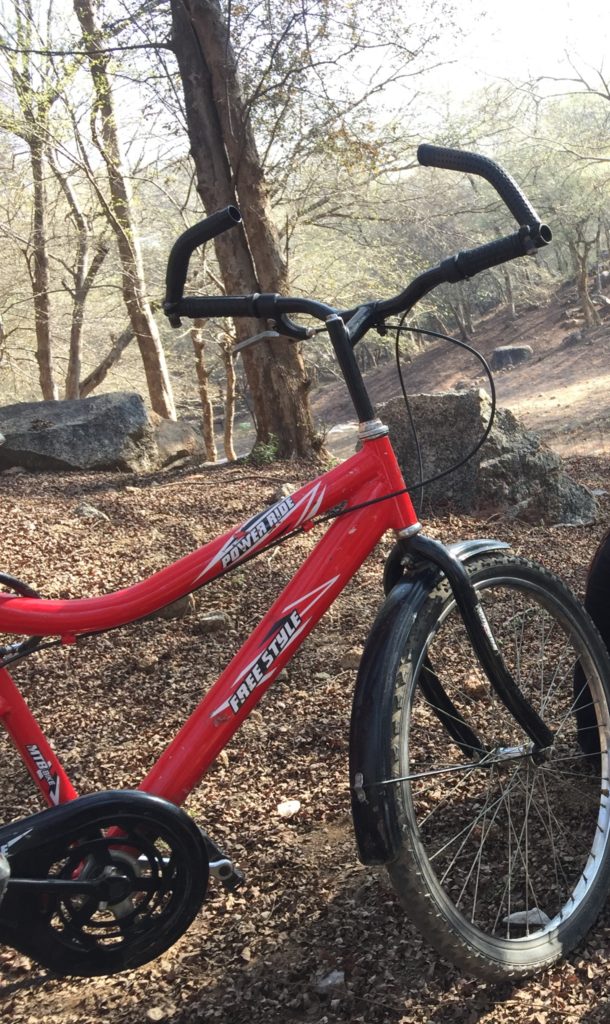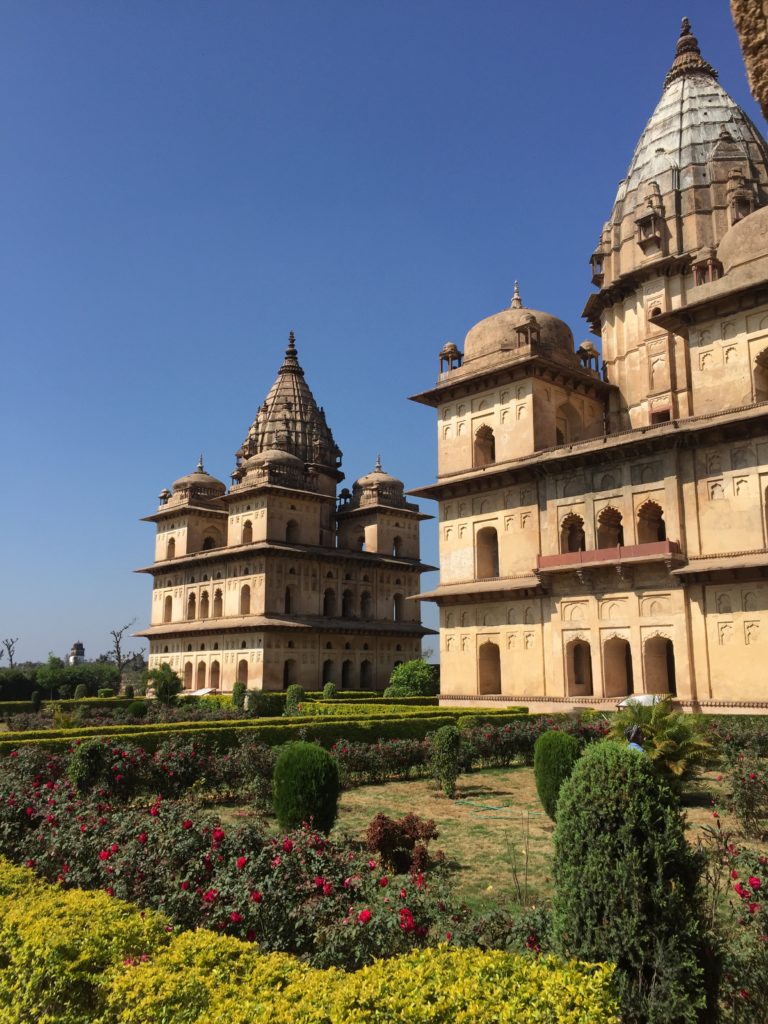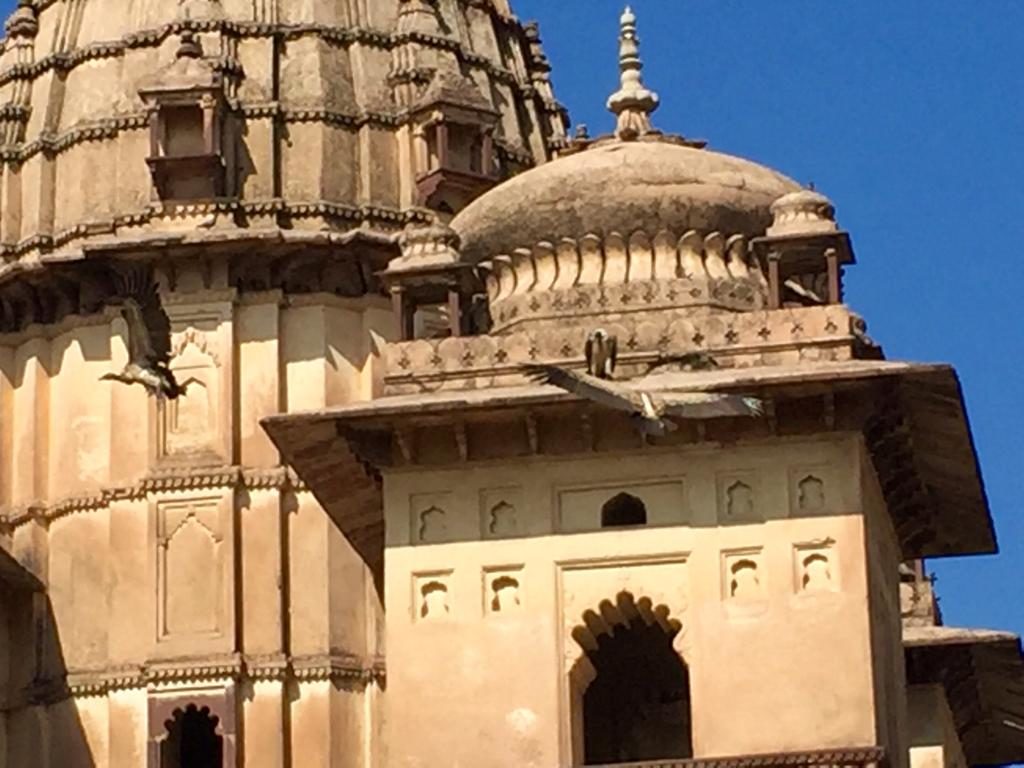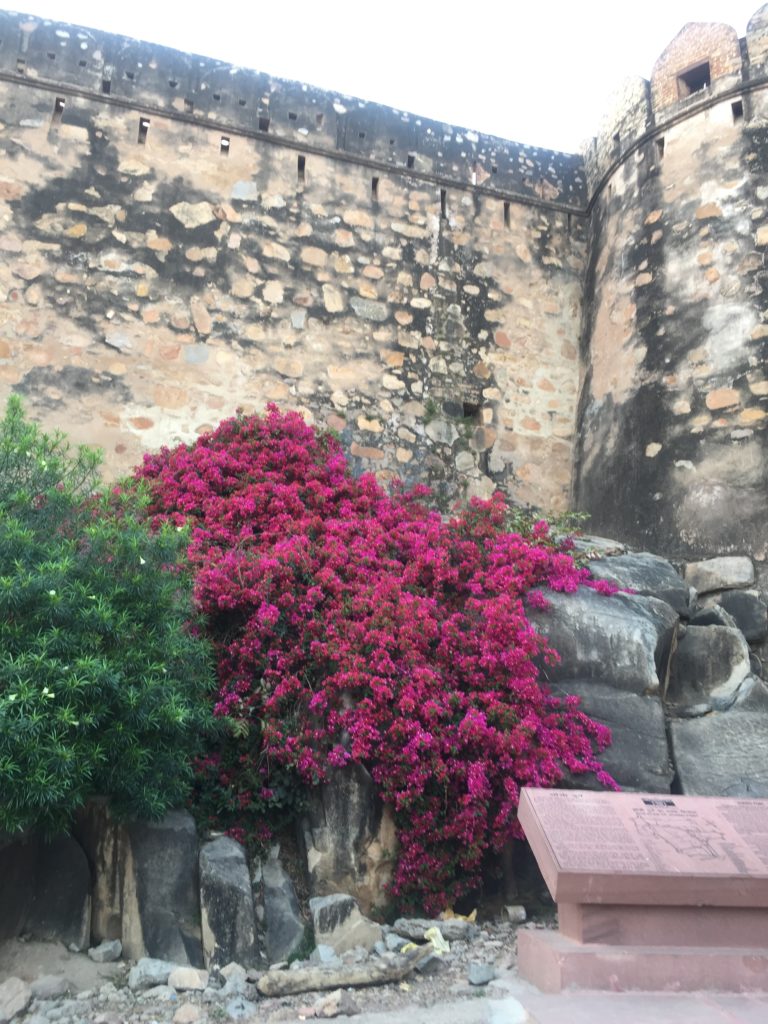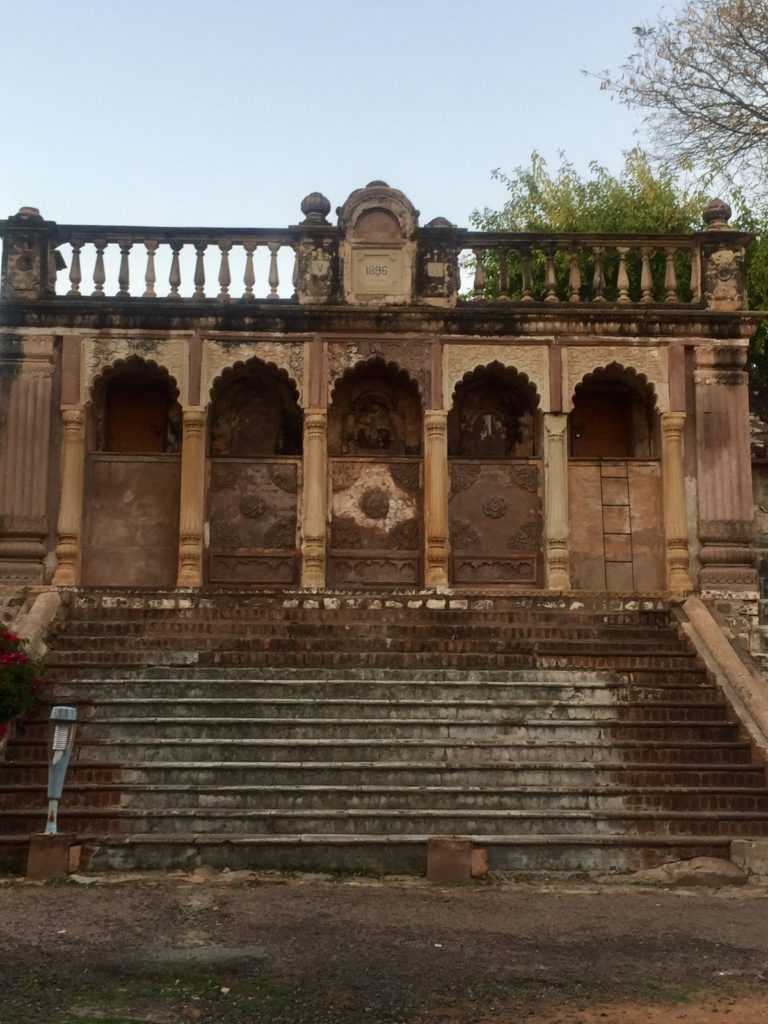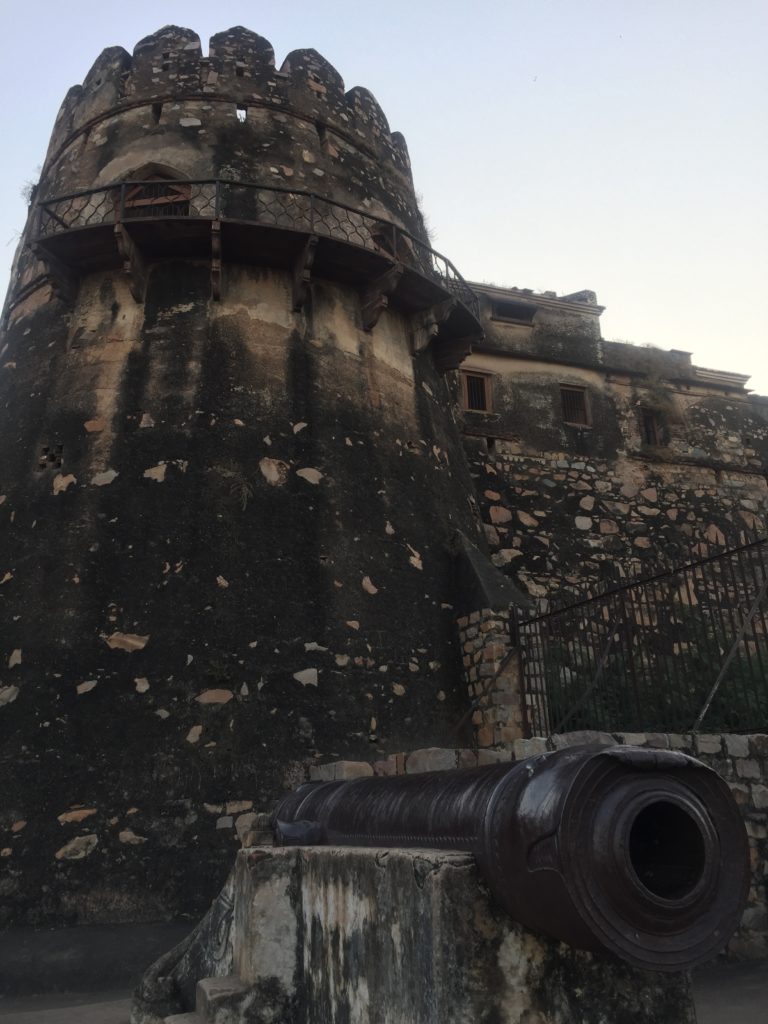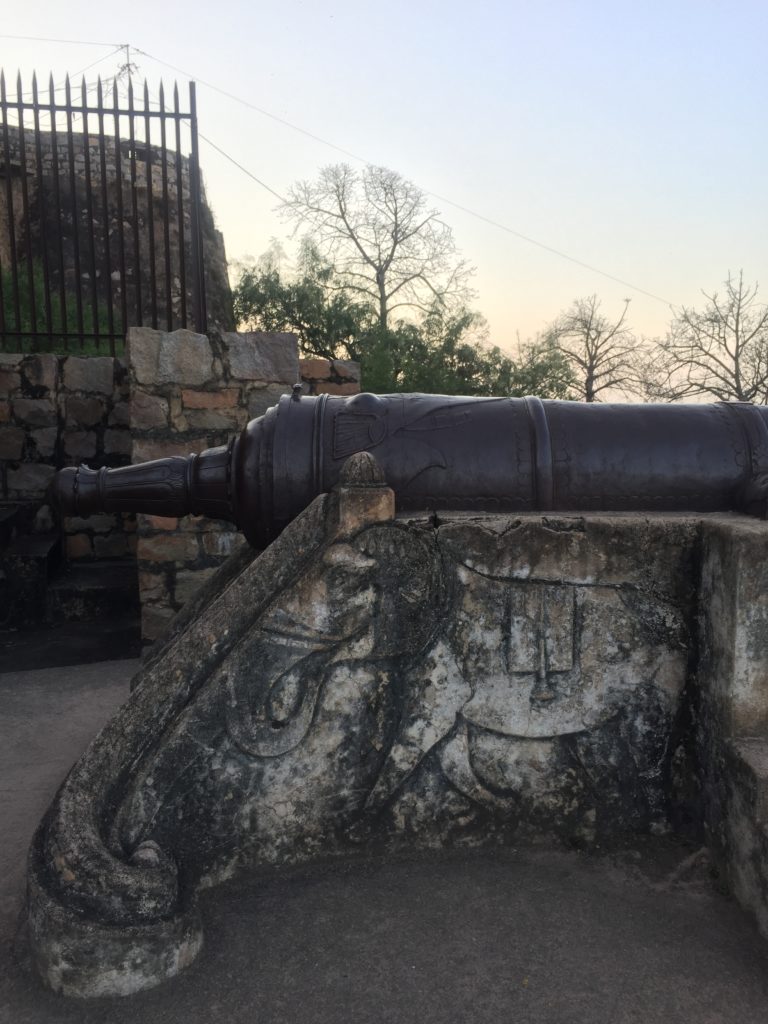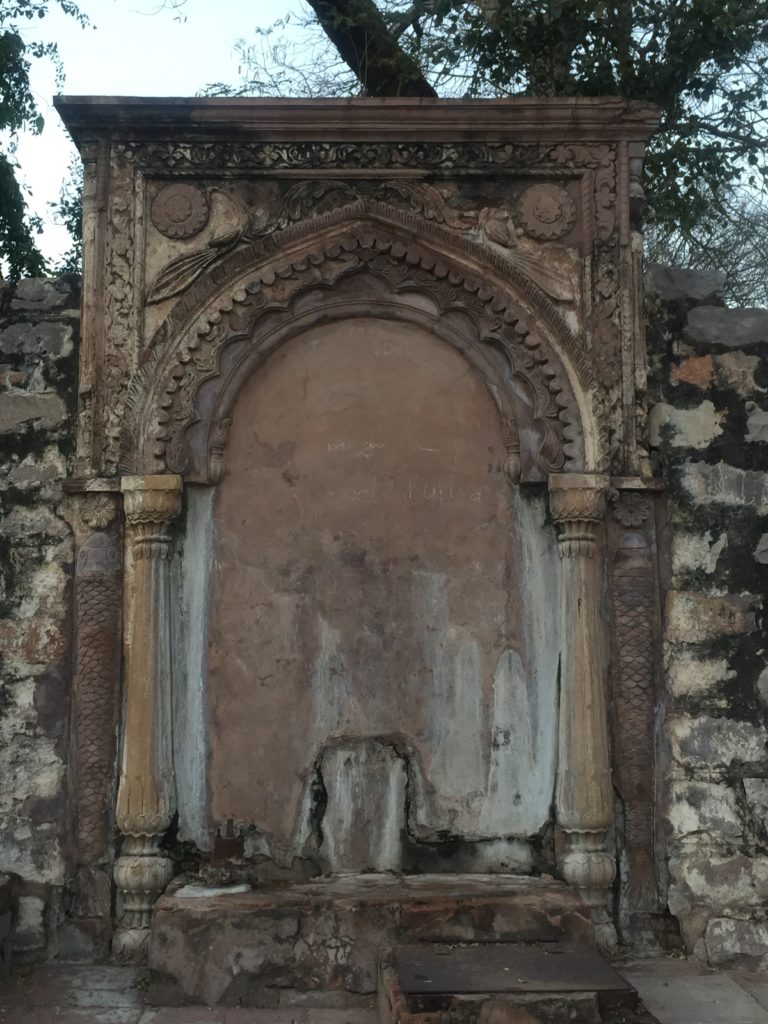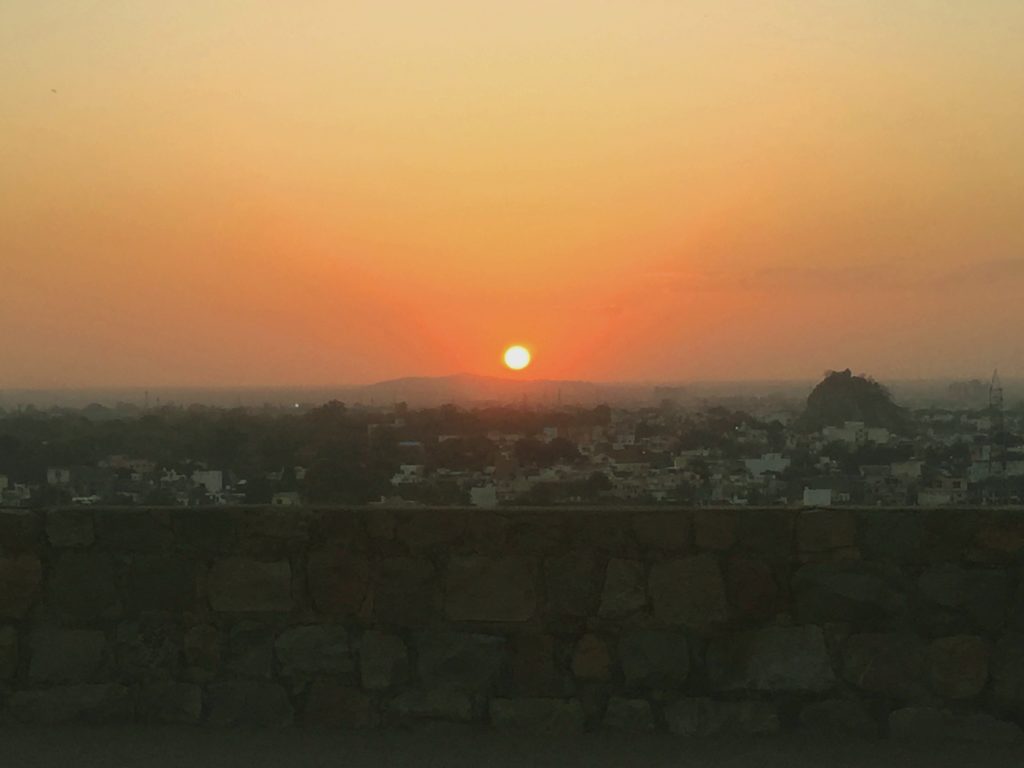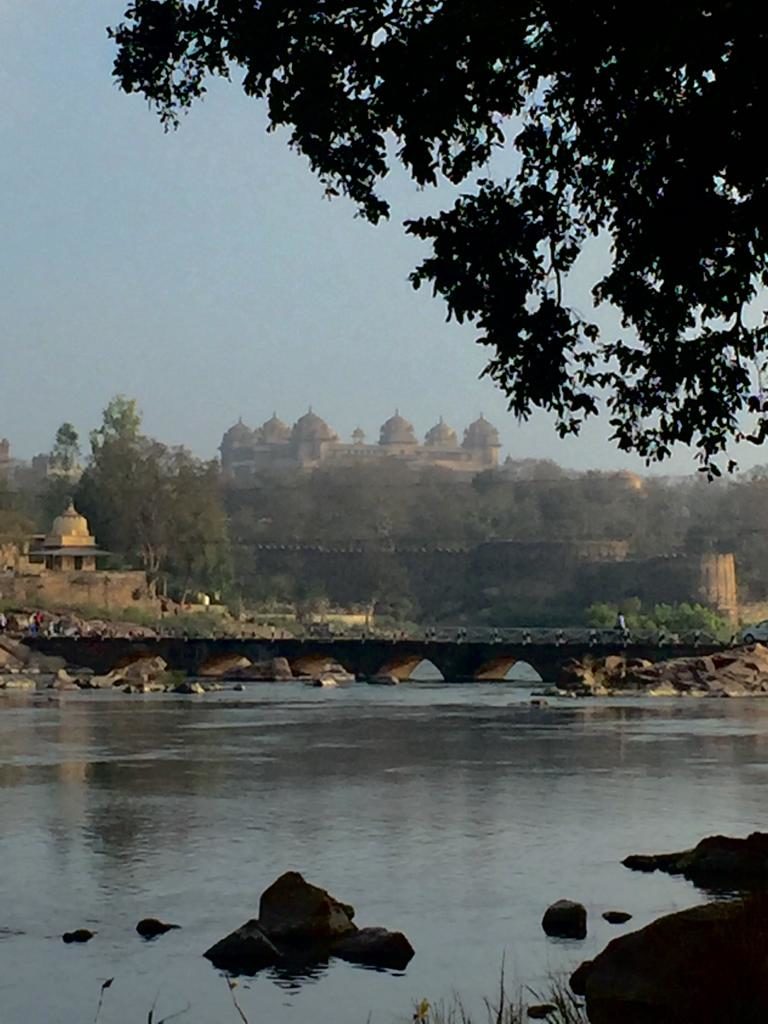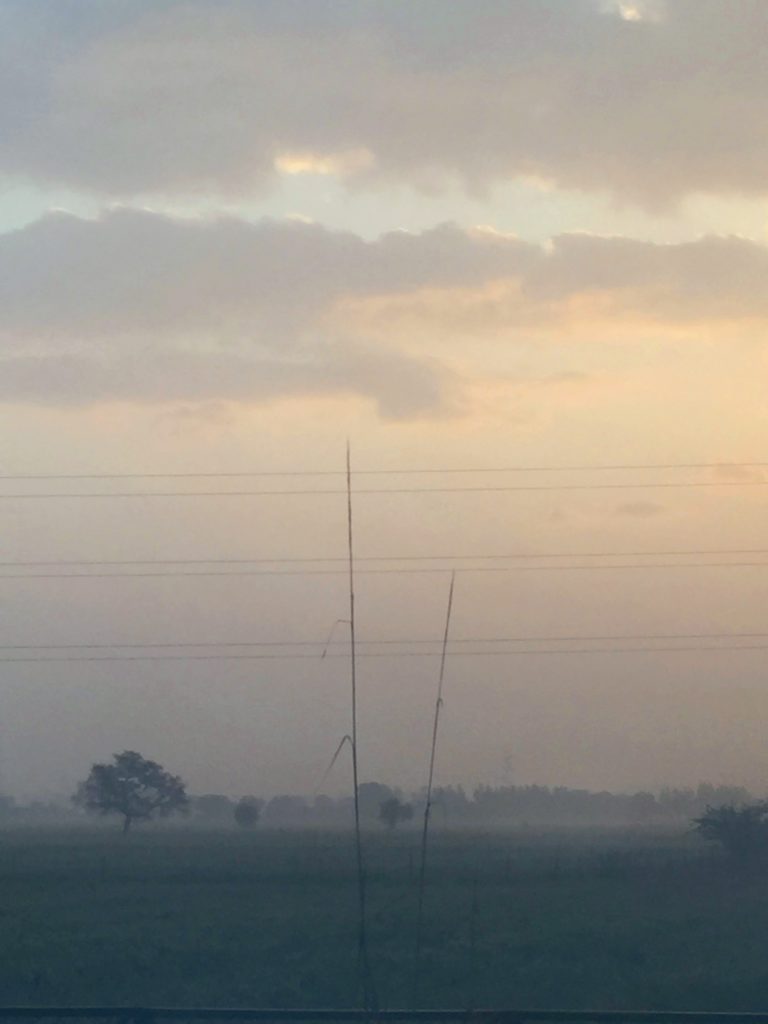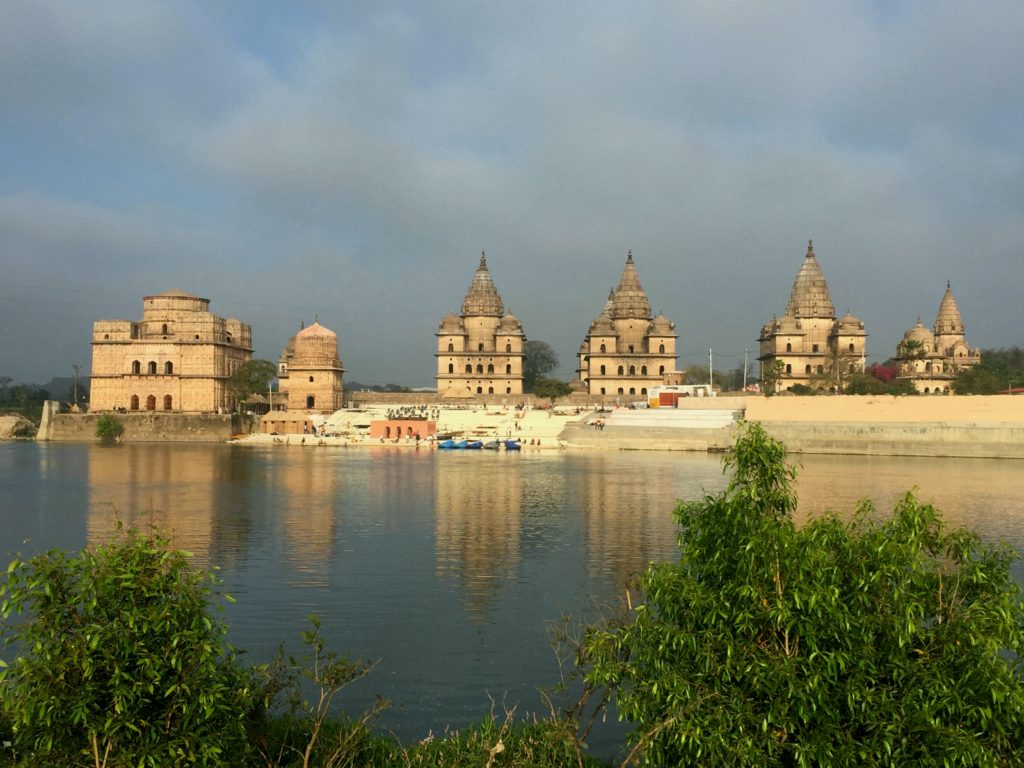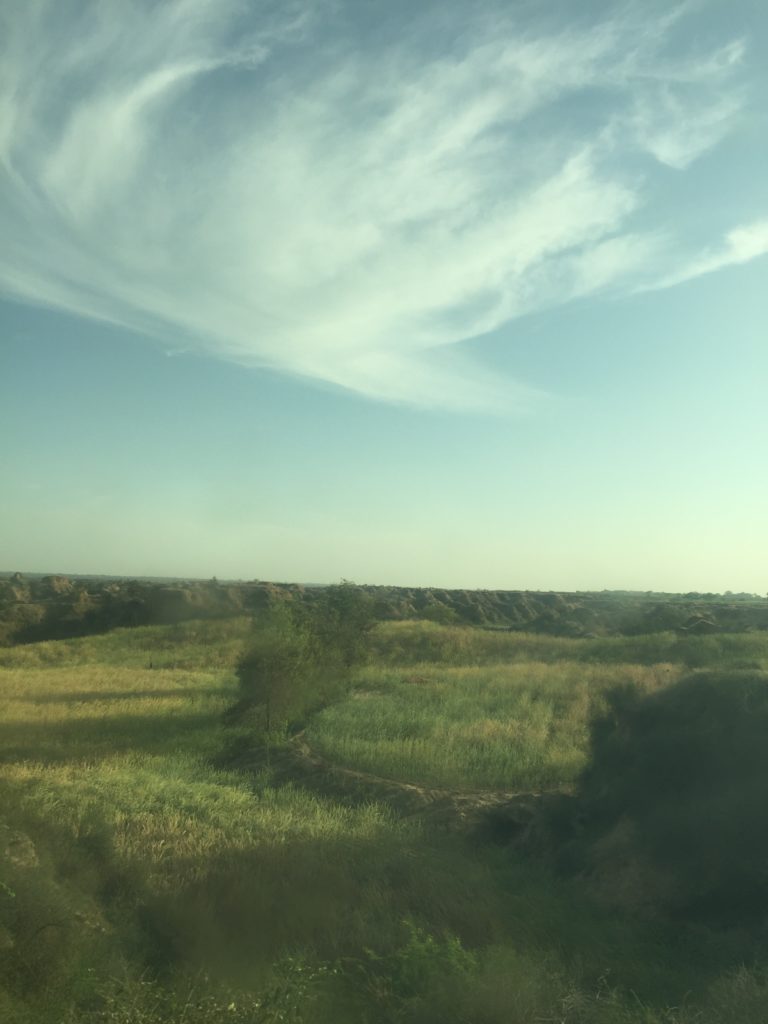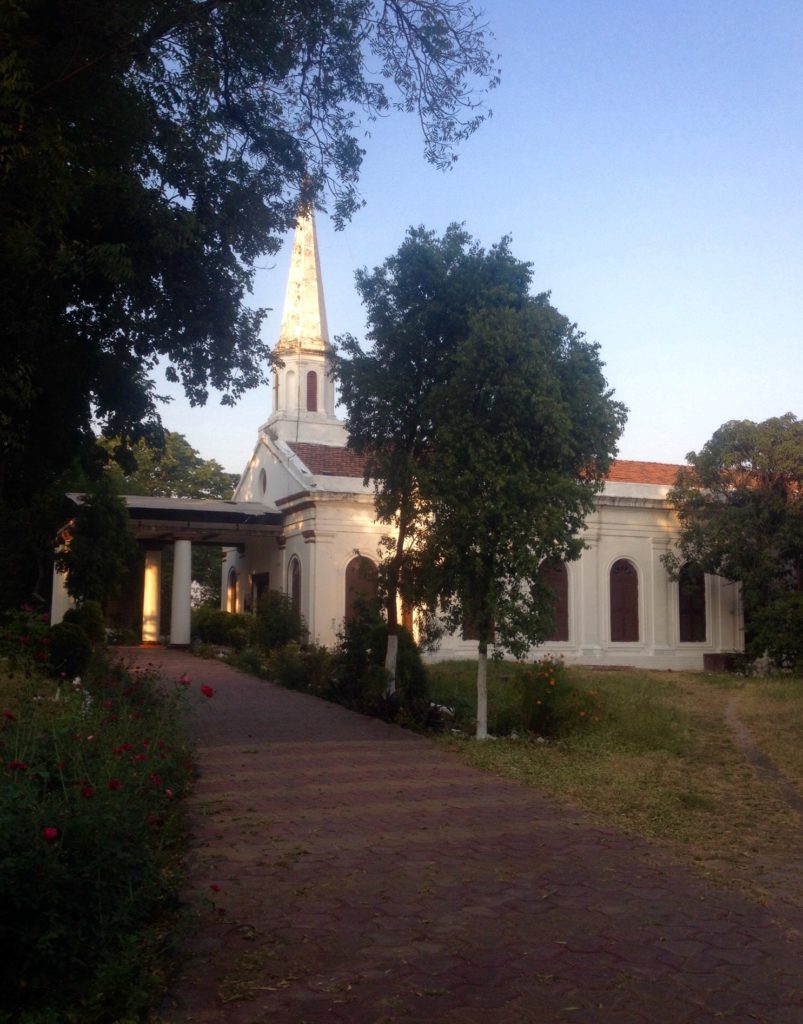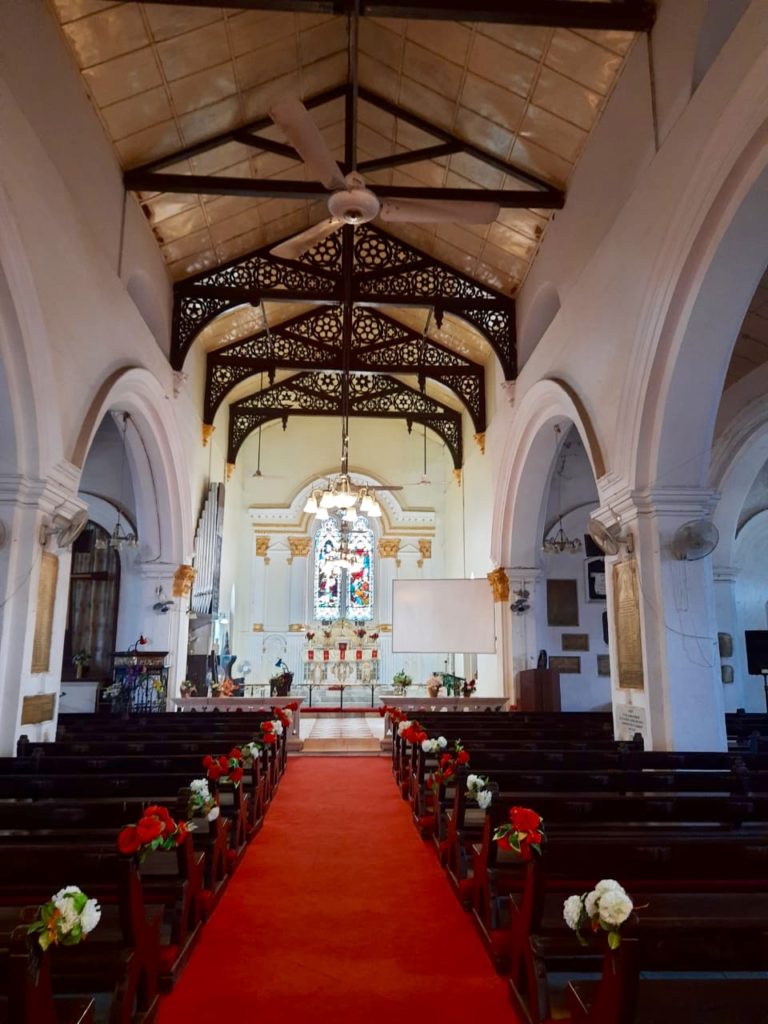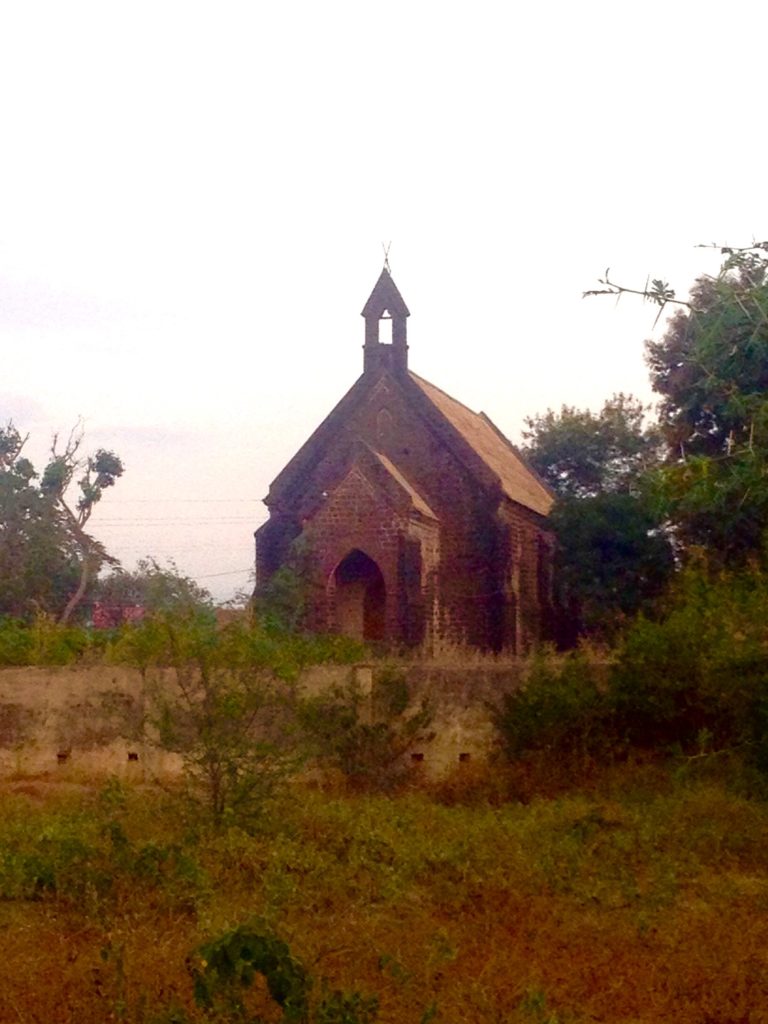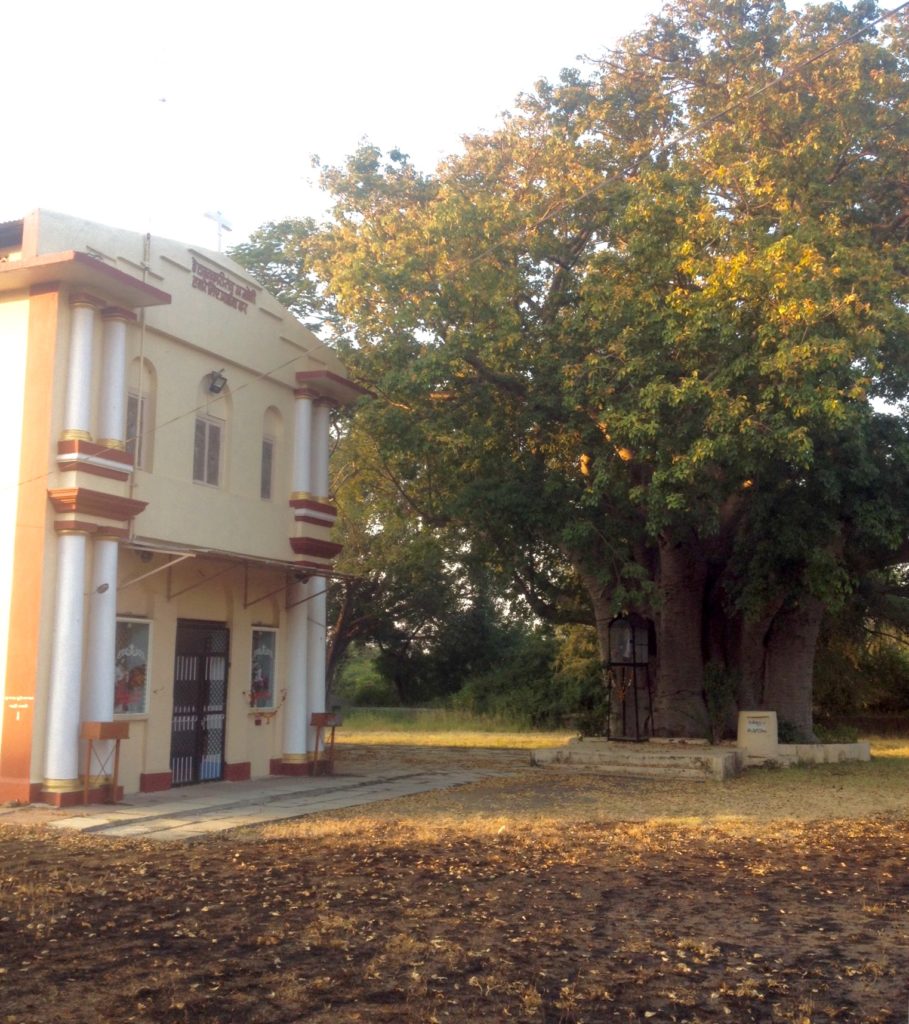Holi was a day of colours alright, as natural and organic as the landscape could provide. Morning dawned a blemish free blue as we headed out. The fields of wheat between Junia and Todaraisingh were a blinding gold, ripe to be shorn. We crossed giant quarries showing seams in more than 50 shades of grey granite but nature isn’t about to write paeans about her bondage scenes anytime soon.
Read about memorable holi scenes in – Disconnecting with the World on a Mountain Isle at Shaama
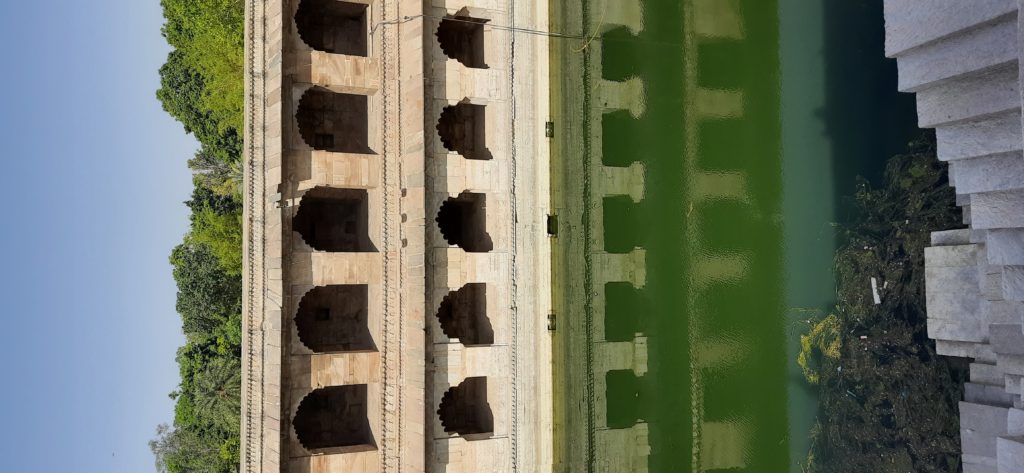
Sitting pretty in a sloping manicured garden with lush trees for company, the 12th century Hadi Rani ki Baori at Todaraisingh was an oasis of green, inside out. The water within emerald, and she playfully threw back dappled sunlight at the arches on a side. A lesser cormorant dried its shiny black wings as a wagtail warmed its belly on the stone steps. Much like we would have, if we had been dousing each other with water. We admired the precise geometry of the steps that make up three sides of the stepwell and explored the cool arched recesses, which make up the fourth of this rectangular structure. The baori was made in memory of a newlywed princess who chopped off her own head, to ensure her hesitating husband had nothing to hold him back from a battle, which he went on to survive only to follow his dearly departed wife in a similar fashion. A story as macabre as it was heroic but then we are in a land where such tales echo off the walls of scattered memorials. There are other smaller stepwells around Todaraisingh, an overgrown village with a catchy name.
Discover stepwells and other stories in –Mandu and Maheshwar in the Monsoon Mist
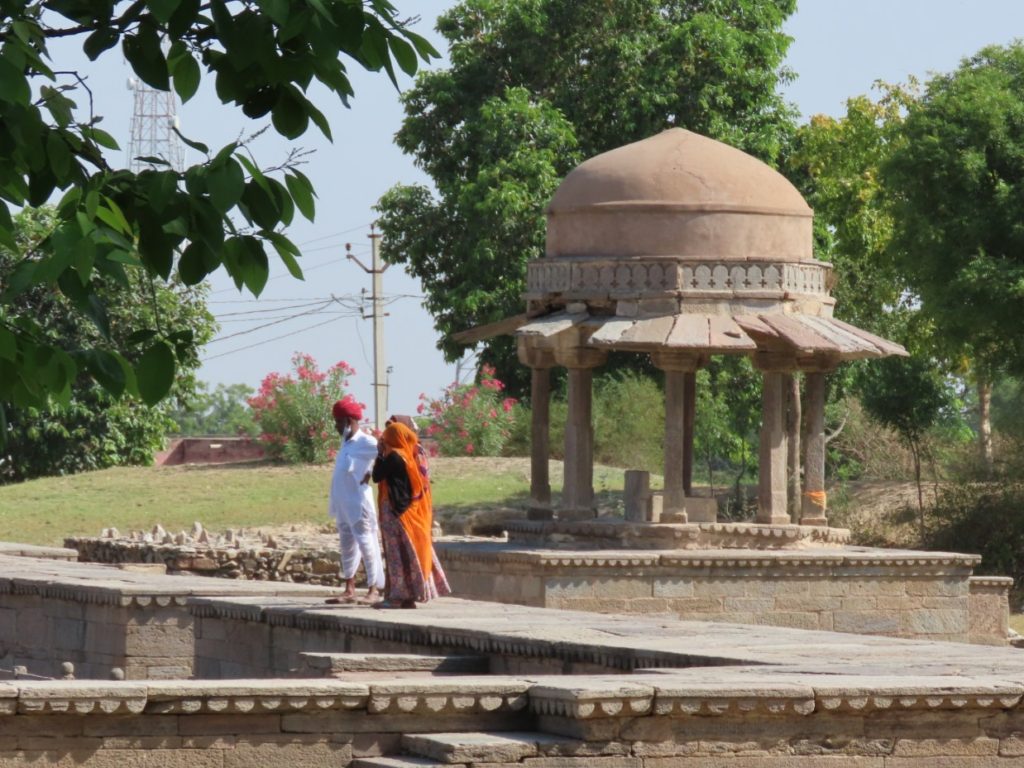
Savour the best Kachoras in the world in – Nasirabad’s Kachora: More than a Savoury Story
After a picnic breakfast there, of packed crunchy kachoris and stuffed mirchi pakoras, we made our way towards a dam that seems quite vast on the map. The green scraggly shrubs with splotches of yellow flowers provided relief from the dullest indeterminate colour of the winding range of hills but it was the flame of the forest holding up their flowers like torchbearers in a hunt, in shades of watery to fiery orange, that dotted the forested hills with increasing regularity. The flowering tree reviving memories of childhood holis, where the flowers added to giant tubs tinted the water orange, for us to fill our pichkaris or simply dunk someone in! As we rounded a bend on the road snaking at the base of the hills, their line broken every now and then by gullies emptying nothing but broken boulders, we spied an ocean of azure blue. What a sight the people living in those huts along the pebbly shore must be waking up to! The sky and the Bisalpur reservoir gently filled their pichkaris with blue, feeding off each other, so entwined at the horizon, that you couldn’t make out where one ended and the other began.
Dive into the colours of another lake in –Pangong Tso – The Gems in the Crown
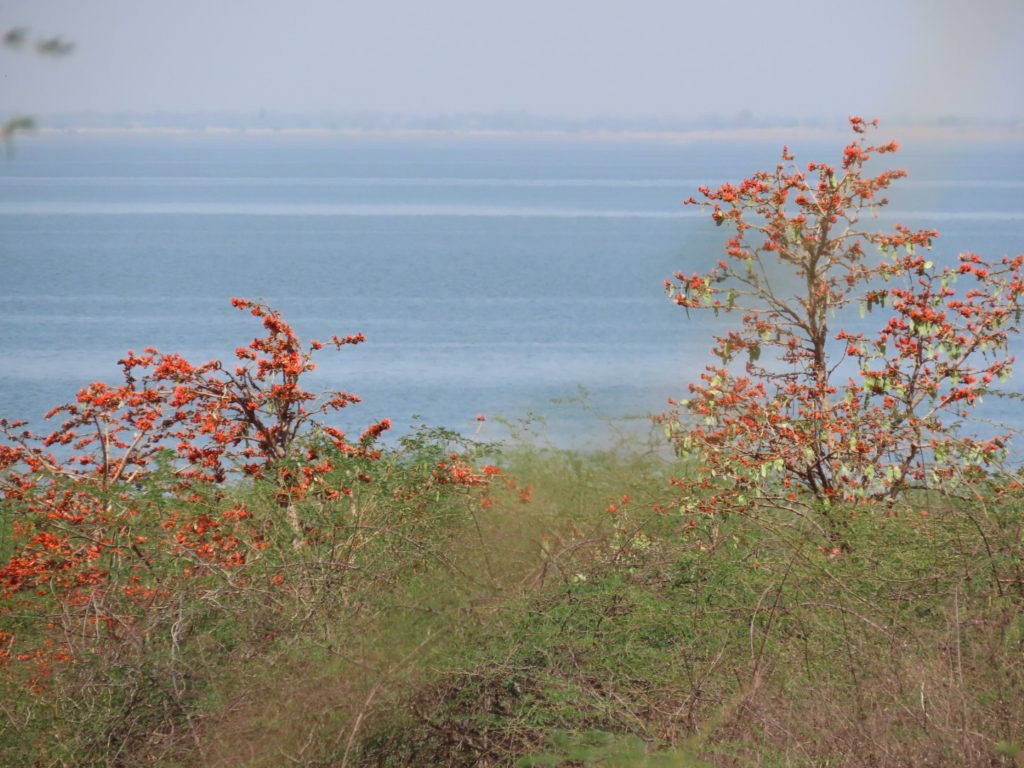
The 12th century Bisal Deoji temple, worn with age and holding within it stunning carvings, sits proudly at the water’s edge and watches them play, not inclined to join in the revelry but left with no choice as the sky blue waters lap at it’s feet. It was on higher ground but the water has inundated it all, not even sparing the temple courtyard in the wet season. The interiors reveal the remains of stunning Maru- Gurjara or Solanki style of architecture with richly carved and in one instance, inscribed column. The higher figurines have been spared the disfigurement meted out to the lower ones. The cool shaded hall with its concentrically carved dome stands in stark relief to the bright openness of the lake with a golden sandy island nearby turning green.
Explore distinct architecture in – Part Two – The Old Gold in Outstanding Orchha
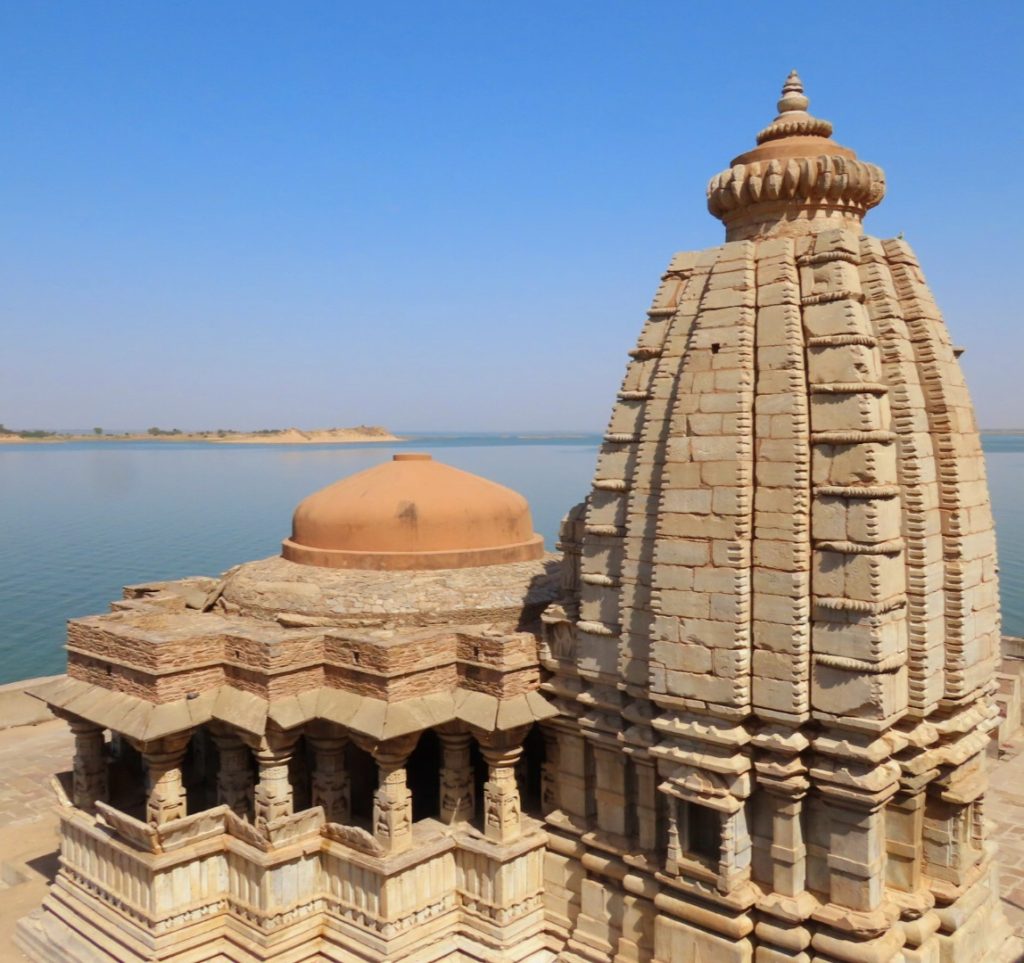
Back home the tikkis of magenta put by the lady of the house at Junia Niwas rounded up the colour palette for the day. Nature’s harlequin canvas giving us a holi to remember in technicolour.
Fact File-
Tonk is 48 kms from Todaraisingh and is the nearest big town.
Todaraisingh is about 114 kms from Ajmer.
Bisalpur dam is about 126 kms from Ajmer.
